 Search by Keyword
|
“ACROSS THE UNIVERSE”
(John Lennon – Paul McCartney)
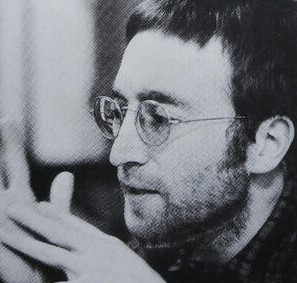 It has been said that, in many cases, we can be our own worst critic. John Lennon definitely falls into this category. Being one of the most prolific, well-respected and highly acclaimed composers of the rock 'n' roll era, Lennon is known for publicly downplaying and/or showing outright disgust for his compositions. Expressions like “a piece of garbage, “another piece of garbage,” “just a throwaway song,” “pure commercial writing,” “it doesn't mean a damn thing” and “I always hated it” were predominantly heard whenever John was asked about his songwriting contributions to The Beatles. It has been said that, in many cases, we can be our own worst critic. John Lennon definitely falls into this category. Being one of the most prolific, well-respected and highly acclaimed composers of the rock 'n' roll era, Lennon is known for publicly downplaying and/or showing outright disgust for his compositions. Expressions like “a piece of garbage, “another piece of garbage,” “just a throwaway song,” “pure commercial writing,” “it doesn't mean a damn thing” and “I always hated it” were predominantly heard whenever John was asked about his songwriting contributions to The Beatles.
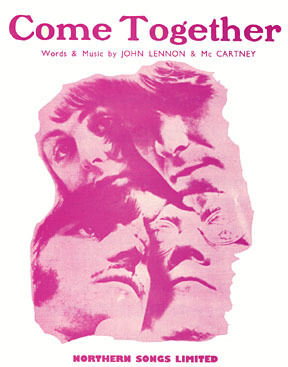 Such was never the case, however, when it came to “Across The Universe.” “It's one of the best lyrics I've written,” he proudly stated in 1970, adding, “in fact it could be the best. It's good poetry, or whatever you call it, without chewin' it. The ones I like are the ones that stand as words without melody. They don't have to have any melody. You can read them like a poem.” While he wasn't satisfied with The Beatles' recording of the song, referring to it in 1980 as “a lousy track of a great song,” “Across The Universe” is counted among a small handful of his compositions that he's proud of, this list also including “Strawberry Fields Forever,” “Come Together” and “Help!” Such was never the case, however, when it came to “Across The Universe.” “It's one of the best lyrics I've written,” he proudly stated in 1970, adding, “in fact it could be the best. It's good poetry, or whatever you call it, without chewin' it. The ones I like are the ones that stand as words without melody. They don't have to have any melody. You can read them like a poem.” While he wasn't satisfied with The Beatles' recording of the song, referring to it in 1980 as “a lousy track of a great song,” “Across The Universe” is counted among a small handful of his compositions that he's proud of, this list also including “Strawberry Fields Forever,” “Come Together” and “Help!”
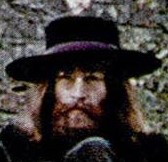 Beatles fans around the world are dumbfounded by Lennon's inability to recognize his own genius, citing his dismissal of their favorite songs. However, critical personal assessments are what have been proven to drive an artist on to achieve the perfection of his or her craft. This can easily be said of John Lennon. Beatles fans around the world are dumbfounded by Lennon's inability to recognize his own genius, citing his dismissal of their favorite songs. However, critical personal assessments are what have been proven to drive an artist on to achieve the perfection of his or her craft. This can easily be said of John Lennon.
Songwriting History
“I wrote the lyrics first and then sang it,” John stated in 1970. “That was usually the case with things like 'In My Life' and 'Across The Universe' and some of the ones that stand out a bit.”
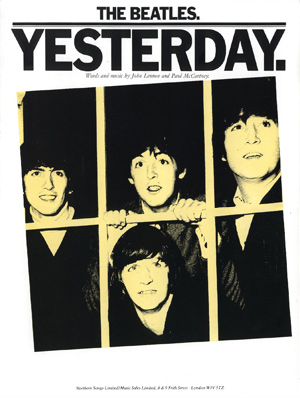 Paul wasn't the only Beatle to receive a song subconciously or in a dream, as he has related concerning “Yesterday.” John claimed subconcious inspiration as the source for several of his songs, but his description of the inspiration for "Across The Universe" makes it sound possibly divine. “The words are purely inspirational and were given to me – except for maybe one or two where I had to resolve a line or something like that,” Lennon explained about "Across The Universe" in 1980. “But the words stand, luckily, by themselves. They were purely inspirational and were given to me as 'Boom!' I don't own it, you know, it came through like that. I don't know where it came from, what meter it's in, and I've sat down and looked at it and said, 'Can I write another one with this meter?' So it's interesting...Such an extraordinary metre and I can never repeat it! It's not a matter of craftsmanship; it wrote itself.” Paul wasn't the only Beatle to receive a song subconciously or in a dream, as he has related concerning “Yesterday.” John claimed subconcious inspiration as the source for several of his songs, but his description of the inspiration for "Across The Universe" makes it sound possibly divine. “The words are purely inspirational and were given to me – except for maybe one or two where I had to resolve a line or something like that,” Lennon explained about "Across The Universe" in 1980. “But the words stand, luckily, by themselves. They were purely inspirational and were given to me as 'Boom!' I don't own it, you know, it came through like that. I don't know where it came from, what meter it's in, and I've sat down and looked at it and said, 'Can I write another one with this meter?' So it's interesting...Such an extraordinary metre and I can never repeat it! It's not a matter of craftsmanship; it wrote itself.”
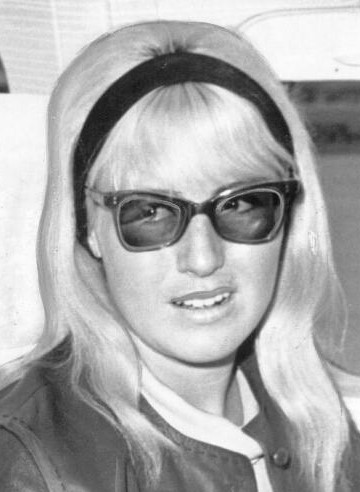 John continues: “I was lying next to my first wife (Cynthia) in bed and I was thinking. It started off as a negative song and she must have been going on and on about something. She'd gone to sleep and I kept hearing, 'Words are flowing out like endless streams...' I was a bit irritated and I went downstairs and it turned into a sort of cosmic song rather than, 'Why are you always mouthing off at me?' or whatever, right? I couldn't get to sleep until I put it on paper. It drove me out of bed. I didn't want to write it. I was just slightly irritable and I couldn't go to sleep...It's like being possessed, like a psychic or a medium. The thing has to go down. It won't let you sleep, so you have to get up, make it into something, and then you're allowed to sleep. That's always in the middle of the bloody night, when you're half awake or tired and your critical faculties are switched off.” John continues: “I was lying next to my first wife (Cynthia) in bed and I was thinking. It started off as a negative song and she must have been going on and on about something. She'd gone to sleep and I kept hearing, 'Words are flowing out like endless streams...' I was a bit irritated and I went downstairs and it turned into a sort of cosmic song rather than, 'Why are you always mouthing off at me?' or whatever, right? I couldn't get to sleep until I put it on paper. It drove me out of bed. I didn't want to write it. I was just slightly irritable and I couldn't go to sleep...It's like being possessed, like a psychic or a medium. The thing has to go down. It won't let you sleep, so you have to get up, make it into something, and then you're allowed to sleep. That's always in the middle of the bloody night, when you're half awake or tired and your critical faculties are switched off.”
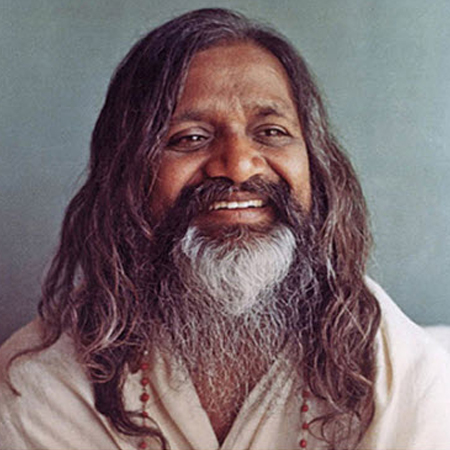 The “cosmic” direction of the song displayed the recent influence of Mahareshi Mahesh Yogi on John and the rest of The Beatles. They had become acquainted with his teachings through George's wife Pattie in mid-1967, met him personally on August 24th of that year, and travelled to Bangor, north Wales the following day, August 25th, to spend the weekend studying Transcendental Meditation under the tutelage of the Maharishi himself. The “cosmic” direction of the song displayed the recent influence of Mahareshi Mahesh Yogi on John and the rest of The Beatles. They had become acquainted with his teachings through George's wife Pattie in mid-1967, met him personally on August 24th of that year, and travelled to Bangor, north Wales the following day, August 25th, to spend the weekend studying Transcendental Meditation under the tutelage of the Maharishi himself.
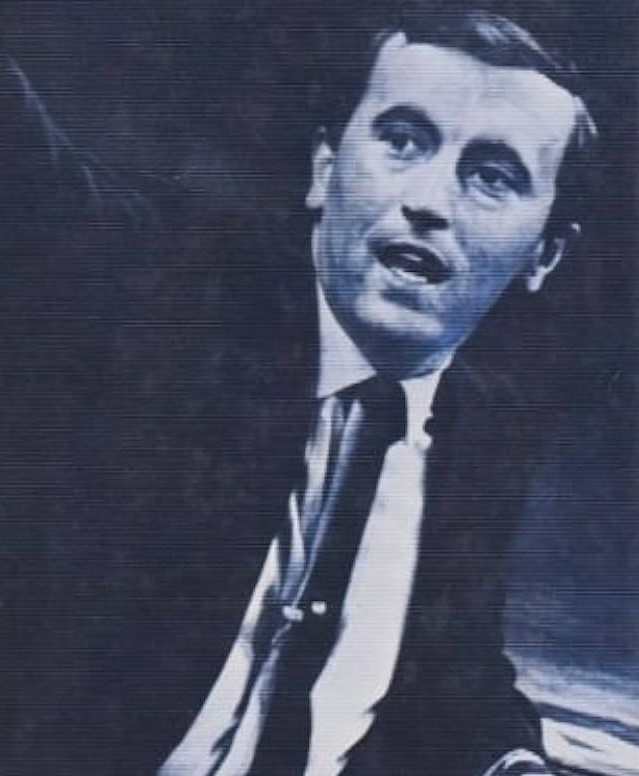 The affect that this had on John is reflected in his September 29th and October 4th appearances on The Frost Programme, hosted by David Frost. These broadcasts were dedicated entirely to their recent introduction to TM, George also accompanying John on both shows. “I've got more energy,” Lennon remarked. “The energy I've found through meditation, I know darn well that I've had it before, but I only used it on good days when everything was going well, and I found more energy because everything was going well. But, through meditation, I've found that, if it's not too good a day, I would still get the same amount.” This newly discovered energy found its way into John's songwriting as well, two compositions of this period being “Child Of Nature” and “Across The Universe.” The affect that this had on John is reflected in his September 29th and October 4th appearances on The Frost Programme, hosted by David Frost. These broadcasts were dedicated entirely to their recent introduction to TM, George also accompanying John on both shows. “I've got more energy,” Lennon remarked. “The energy I've found through meditation, I know darn well that I've had it before, but I only used it on good days when everything was going well, and I found more energy because everything was going well. But, through meditation, I've found that, if it's not too good a day, I would still get the same amount.” This newly discovered energy found its way into John's songwriting as well, two compositions of this period being “Child Of Nature” and “Across The Universe.”
 The lyrics of “Across The Universe” are permeated with the philosophy and teachings of the Maharishi, which John was enamored with at the time. “I think he meant we all want to change the world Maharishi-style,” McCartney relates in his book “Many Years From Now,” saying that both of John's songs “Revolution” and “Across The Universe” “had the change-the-world theme. I remember John talking to Maharishi about it and Maharishi wanted more optimism; 'Meditation will change your world.' He didn't want 'nothing's going to change your world'; that sounded too negative. But we refused to do that because it sounded better the other way.” The lyrics of “Across The Universe” are permeated with the philosophy and teachings of the Maharishi, which John was enamored with at the time. “I think he meant we all want to change the world Maharishi-style,” McCartney relates in his book “Many Years From Now,” saying that both of John's songs “Revolution” and “Across The Universe” “had the change-the-world theme. I remember John talking to Maharishi about it and Maharishi wanted more optimism; 'Meditation will change your world.' He didn't want 'nothing's going to change your world'; that sounded too negative. But we refused to do that because it sounded better the other way.”
 The otherworldly images that John was experiencing through meditation during the later months of 1967 found their way into the lyrics of “Across The Universe,” such as “images of broken light which dance before me like a million eyes.” John's “open ears” also take in the imagery with “sounds of laughter, shades of life” that entice and invite him. With 'Love' encapsulating the teachings of the Maharishi, this also makes an appearance in the lyrics in the form of “limitless, undying love” that shines around him “like a million suns.” The Maharishi's personal guru, which he identified to The Beatles as “Guru Dev,” plays a prominent role in John's lyrics in the Sanskrit phrase “Jai guru deva,” or as invoked by the Maharishi as “All glory to Guru Dev.” This is followed in the song with the sacred sound “Om,” which is popularly used in meditation and is said to signify the essence of the ultimate reality or consciousness. You may recognize the "Om" symbol as it appears on many George Harrison releases throughout his solo career. The otherworldly images that John was experiencing through meditation during the later months of 1967 found their way into the lyrics of “Across The Universe,” such as “images of broken light which dance before me like a million eyes.” John's “open ears” also take in the imagery with “sounds of laughter, shades of life” that entice and invite him. With 'Love' encapsulating the teachings of the Maharishi, this also makes an appearance in the lyrics in the form of “limitless, undying love” that shines around him “like a million suns.” The Maharishi's personal guru, which he identified to The Beatles as “Guru Dev,” plays a prominent role in John's lyrics in the Sanskrit phrase “Jai guru deva,” or as invoked by the Maharishi as “All glory to Guru Dev.” This is followed in the song with the sacred sound “Om,” which is popularly used in meditation and is said to signify the essence of the ultimate reality or consciousness. You may recognize the "Om" symbol as it appears on many George Harrison releases throughout his solo career.
Being written sometime in the later months of 1967 in his Kenwood home in Weybridge, Surrey, Lennon is acknowledged as the sole writer of “Across The Universe,” McCartney never claiming any share in its authorship.
Recording History
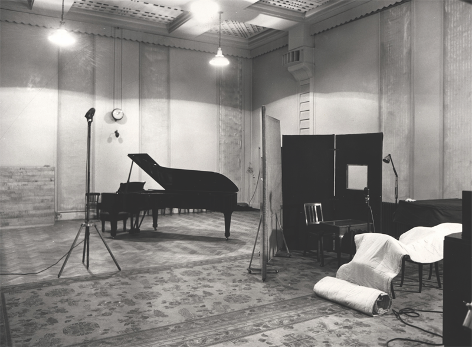 John Lennon brought “Across The Universe” into EMI Studio Three on Sunday, February 4th, 1968, offering it for consideration as The Beatles' next single. Immersed in a highly spiritual state of mind at the time, lately being a regular practicer of Transcendental Meditation, he felt very strongly about the song and hoped his band-mates would embrace it as fully as he had. It was his first composition using this subject matter, and was immensely different from the last song he had offered to The Beatles, this being "I Am The Walrus," on September 5th, 1967. John Lennon brought “Across The Universe” into EMI Studio Three on Sunday, February 4th, 1968, offering it for consideration as The Beatles' next single. Immersed in a highly spiritual state of mind at the time, lately being a regular practicer of Transcendental Meditation, he felt very strongly about the song and hoped his band-mates would embrace it as fully as he had. It was his first composition using this subject matter, and was immensely different from the last song he had offered to The Beatles, this being "I Am The Walrus," on September 5th, 1967.
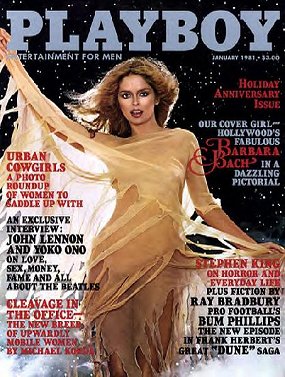 But was “Across The Universe” accepted enthusiastically as he had hoped? “Nobody was interested in doing it originally,” John related in 1980. “Everyone was sickened. The tune was good, but subliminally people don't want to work with it sometimes. I was so disappointed.” To further describe the atmosphere on this day, Lennon elaborated to Playboy magazine in 1980: “I was psychologically destroyed. Nobody was supporting me or helping me with it, but we would spend hours doing little detail cleaning on Paul's (songs). When it came to mine, somehow this atmosphere of looseness and casualness – 'Let's try a few experiments' – would come over. It was subconscious sabotage, yeah. He will say this doesn't exist, that I'm paranoid, but I'm not paranoid. It's the absolute truth.” But was “Across The Universe” accepted enthusiastically as he had hoped? “Nobody was interested in doing it originally,” John related in 1980. “Everyone was sickened. The tune was good, but subliminally people don't want to work with it sometimes. I was so disappointed.” To further describe the atmosphere on this day, Lennon elaborated to Playboy magazine in 1980: “I was psychologically destroyed. Nobody was supporting me or helping me with it, but we would spend hours doing little detail cleaning on Paul's (songs). When it came to mine, somehow this atmosphere of looseness and casualness – 'Let's try a few experiments' – would come over. It was subconscious sabotage, yeah. He will say this doesn't exist, that I'm paranoid, but I'm not paranoid. It's the absolute truth.”
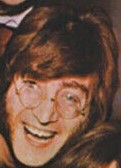 It was under these psychological circumstances that The Beatles made their attempt at recording “Across The Universe,” the group reverting to their earlier practice of booking both afternoon and evening recording sessions on the same day. The earlier session ran from 2:30 to 5:30 pm, the tapes revealing that John wasn't entirely sure of how he wanted the song to be presented. It was under these psychological circumstances that The Beatles made their attempt at recording “Across The Universe,” the group reverting to their earlier practice of booking both afternoon and evening recording sessions on the same day. The earlier session ran from 2:30 to 5:30 pm, the tapes revealing that John wasn't entirely sure of how he wanted the song to be presented.
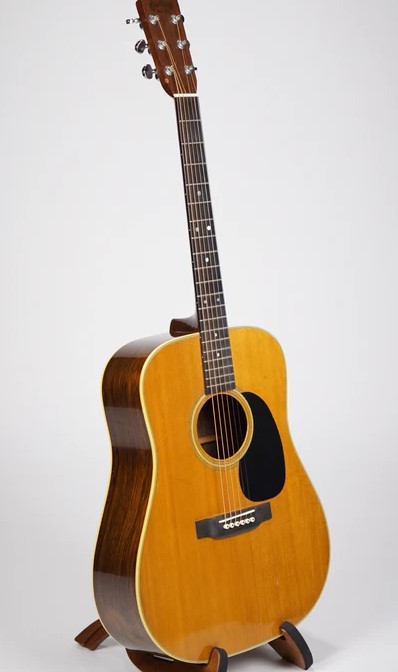 "Take one" was an instrumental track consisting of John on his newly acquired Martin D-28 acoustic guitar, George on tamboura and Ringo on tom-toms, all of these being fed through a rotating Leslie speaker and subject to a process known as “flanging.” "Take two" changed things up a bit, Paul playing his new Martin D-28 acoustic guitar along with John, while George changed to sitar and Ringo moved to svaramandal, an exotic instrument George had previously used on “Strawberry Fields Forever” back in December of 1966. John also provided a guide vocal, which was only flawed by his struggle to insert breaths at appropriate places in his delivery of the lengthy lyrical phrases. The result of this take was a gorgeous recording that eventually appeared on the 1996 compilation album “Anthology 2.” "Take one" was an instrumental track consisting of John on his newly acquired Martin D-28 acoustic guitar, George on tamboura and Ringo on tom-toms, all of these being fed through a rotating Leslie speaker and subject to a process known as “flanging.” "Take two" changed things up a bit, Paul playing his new Martin D-28 acoustic guitar along with John, while George changed to sitar and Ringo moved to svaramandal, an exotic instrument George had previously used on “Strawberry Fields Forever” back in December of 1966. John also provided a guide vocal, which was only flawed by his struggle to insert breaths at appropriate places in his delivery of the lengthy lyrical phrases. The result of this take was a gorgeous recording that eventually appeared on the 1996 compilation album “Anthology 2.”
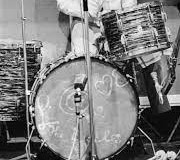 The master tape does not reveal a "take three" (this possibly being a false start that was spooled back and recorded over), but both "take four" and "take five" show the group doing further experimentation with the arrangement. It was decided by "take six," which is contained on the "Super Deluxe" 50th Anniverisary “White Album” box set, that all Indian instrumentation would be dropped, at least for the rhythm track. This take featured only John on acoustic guitar and vocals with Ringo on tom-toms, the recording beginning with John asking, “Are you alright, Richie?” John still struggles at times to insert his breaths in strategic places of the lyrics, but otherwise it is an engaging rendition. The master tape does not reveal a "take three" (this possibly being a false start that was spooled back and recorded over), but both "take four" and "take five" show the group doing further experimentation with the arrangement. It was decided by "take six," which is contained on the "Super Deluxe" 50th Anniverisary “White Album” box set, that all Indian instrumentation would be dropped, at least for the rhythm track. This take featured only John on acoustic guitar and vocals with Ringo on tom-toms, the recording beginning with John asking, “Are you alright, Richie?” John still struggles at times to insert his breaths in strategic places of the lyrics, but otherwise it is an engaging rendition.
 "Take seven" appears to be the result of an overdub onto "take six," evidenced by John's identical "Are you alright, Richie?" introduction at the beginning of the song. George overdubbed tamboura, run through a rotating Leslie speaker as all of the instruments were and subjected to artificial double tracking. "Take seven" was deemed best, which ending the afternoon session at 5:30 pm. "Take seven" appears to be the result of an overdub onto "take six," evidenced by John's identical "Are you alright, Richie?" introduction at the beginning of the song. George overdubbed tamboura, run through a rotating Leslie speaker as all of the instruments were and subjected to artificial double tracking. "Take seven" was deemed best, which ending the afternoon session at 5:30 pm.
After a 2 & 1/2 hour break, The Beatles returned to EMI Studio Three at 8 pm to concentrate on more overdubs for “Across The Universe,” starting with John re-recording his lead vocals. To accommodate John's indecisiveness, George Martin played the rhythm track at a slightly slower speed for him to sing to, making Lennon's voice appear to have a higher pitch when played back at the normal speed.
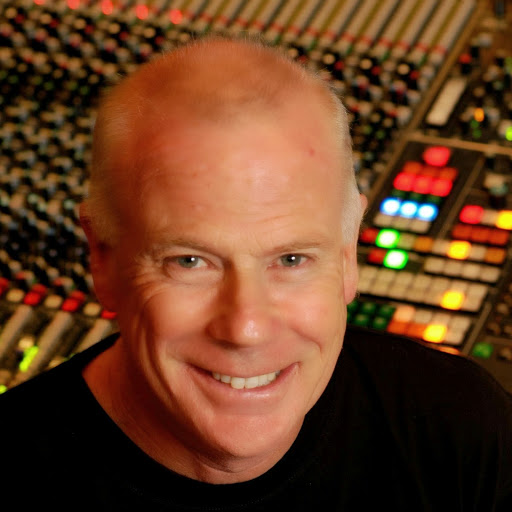 This having been accomplished, it was decided that high falsetto voices were needed, this possibly being evidence of Paul's “Let's try a few experiments” attitude that John later resented. Since these desired backing vocals were apparently out of John and Paul's range, and hiring professional singers on a Sunday evening was deemed impossible on such short notice, Paul had a brainstorm. “There was a whole crowd of girls outside,” engineer Martin Benge remembers about the "Apple Scruffs," as they eventually would be nick-named, “and Paul went out to find a couple of suitable ones.” This having been accomplished, it was decided that high falsetto voices were needed, this possibly being evidence of Paul's “Let's try a few experiments” attitude that John later resented. Since these desired backing vocals were apparently out of John and Paul's range, and hiring professional singers on a Sunday evening was deemed impossible on such short notice, Paul had a brainstorm. “There was a whole crowd of girls outside,” engineer Martin Benge remembers about the "Apple Scruffs," as they eventually would be nick-named, “and Paul went out to find a couple of suitable ones.”
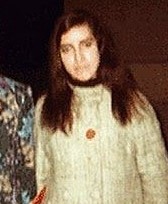 As detailed in Kenneth Womack's book "Living The Beatles Legend: The Untold Story Of Mal Evans," "Hailing from Rio de Janeiro, Lizzie (Bravo) had been in London since the previous spring, having arrived during the 'Sgt. Pepper' sessions. On her very first day at EMI Studios, she caught glimpses of the bandmates, Brian (Epstein) and Mal (Evans), whom she had gotten to know while standing vigil outside the studio walls...Paul concluded that the recording would benefit from soprano harmonies. When he approached the regular gaggle of female fans congregated outside the studio gates to see if anyone could hold a high note, 16-year-old Lizzie Bravo and 17-year-old Gayleen Pease (a London native) replied in the affirmative. A few minutes later, Mal (Evans) ushered the young women into the studio, where they were understandably astounded to be not only inside the famous facility, but also performing on a Beatles record, for which they sang, 'Nothings's gonna change my world.'" They sang these lyrics in each chorus, singing the straight melody line in their higher voices. As detailed in Kenneth Womack's book "Living The Beatles Legend: The Untold Story Of Mal Evans," "Hailing from Rio de Janeiro, Lizzie (Bravo) had been in London since the previous spring, having arrived during the 'Sgt. Pepper' sessions. On her very first day at EMI Studios, she caught glimpses of the bandmates, Brian (Epstein) and Mal (Evans), whom she had gotten to know while standing vigil outside the studio walls...Paul concluded that the recording would benefit from soprano harmonies. When he approached the regular gaggle of female fans congregated outside the studio gates to see if anyone could hold a high note, 16-year-old Lizzie Bravo and 17-year-old Gayleen Pease (a London native) replied in the affirmative. A few minutes later, Mal (Evans) ushered the young women into the studio, where they were understandably astounded to be not only inside the famous facility, but also performing on a Beatles record, for which they sang, 'Nothings's gonna change my world.'" They sang these lyrics in each chorus, singing the straight melody line in their higher voices.
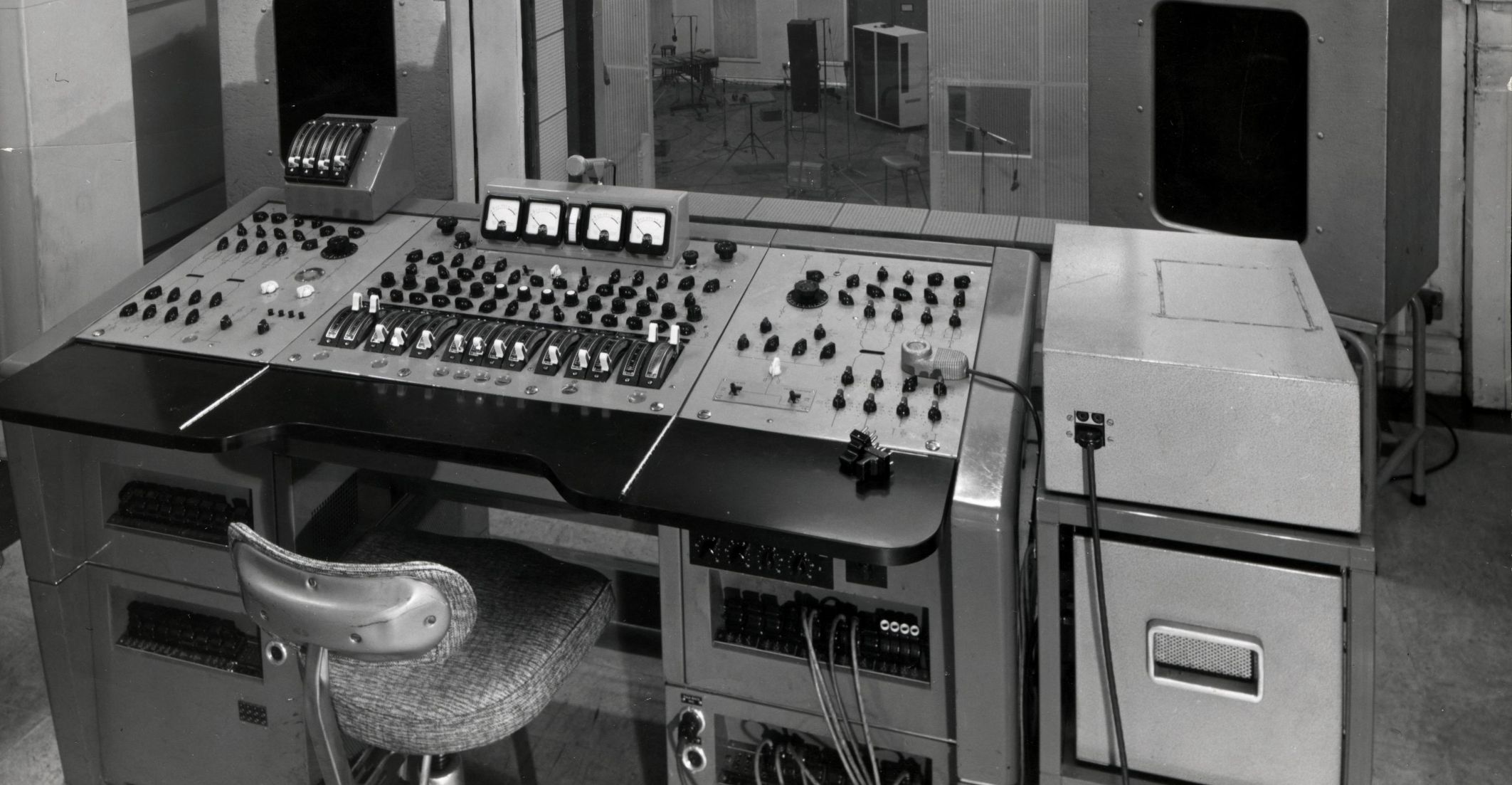 With this complete, they were thanked and ushered out of the studio to allow The Beatles to add one final overdub to the master tape of “Across The Universe” that evening. Since all four tracks of the four-track tape were now filled, a reduction mix was first made in order to open up some tracks to accommodate this last overdub, thus reduction mix turning "take seven" into "take eight." With this complete, they were thanked and ushered out of the studio to allow The Beatles to add one final overdub to the master tape of “Across The Universe” that evening. Since all four tracks of the four-track tape were now filled, a reduction mix was first made in order to open up some tracks to accommodate this last overdub, thus reduction mix turning "take seven" into "take eight."
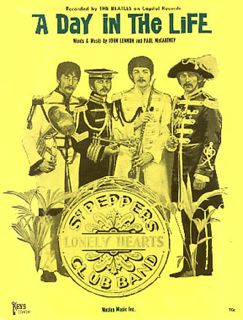 This overdub consisted of yet another “experiment,” this consisting of backwards recordings of Paul's bass and Ringo's drums being added to track four of "take eight." This didn't end the experimentation for the day, however. Onto a seperate four-track tape was recorded 15 seconds of humming, this then being overdubbed three more times with identical humming to fill up all four tracks of the tape, documentation identifying this as “Hums Wild.” The result was nearly identical, and in the same key, as what was recorded and proposed for the conclusion of “A Day In The Life” in February of 1967, although never used. This overdub consisted of yet another “experiment,” this consisting of backwards recordings of Paul's bass and Ringo's drums being added to track four of "take eight." This didn't end the experimentation for the day, however. Onto a seperate four-track tape was recorded 15 seconds of humming, this then being overdubbed three more times with identical humming to fill up all four tracks of the tape, documentation identifying this as “Hums Wild.” The result was nearly identical, and in the same key, as what was recorded and proposed for the conclusion of “A Day In The Life” in February of 1967, although never used.
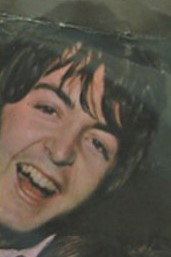 Then, a guitar and droning harp-like sound was also recorded, the tape box indicating that all of these recordings were “to be played backwards” and added to “Across The Universe.” Before the session was complete, these backwards recordings were indeed added to another open track of "take eight," a mono mix then being prepared and given as an acetate for John to review at home. This unique mix, as circulated on bootleg recordings, has become known as the “Hums Wild” version. While the mix is appealing, presenting the song with a trippy, hallucinogenic arrangement, this evidence solidifies John's assessment that the experimental liberties given to Paul had taken his song in a direction far removed from its composer's intentions. That being said, this productive session came to a close at 2 am the following morning. Then, a guitar and droning harp-like sound was also recorded, the tape box indicating that all of these recordings were “to be played backwards” and added to “Across The Universe.” Before the session was complete, these backwards recordings were indeed added to another open track of "take eight," a mono mix then being prepared and given as an acetate for John to review at home. This unique mix, as circulated on bootleg recordings, has become known as the “Hums Wild” version. While the mix is appealing, presenting the song with a trippy, hallucinogenic arrangement, this evidence solidifies John's assessment that the experimental liberties given to Paul had taken his song in a direction far removed from its composer's intentions. That being said, this productive session came to a close at 2 am the following morning.
 After four days to think about it, John returned with The Beatles to EMI Studio Two on February 8th, 1968, to have another go at presenting “Across The Universe” in a way that he felt suitable. Extensive work was done on this day to "take eight" from the previous session, pressure being felt to nail down what would be the next Beatles single before they left for India the following week. While the trippy “Hums Wild” version of the song, with its spiritual themed lyrics bestowing the teachings of the Maharishi, would have been a suitable Beatles single to be climbing the charts while the group was in India under the tutelage of this very teacher, John had other things in mind. After four days to think about it, John returned with The Beatles to EMI Studio Two on February 8th, 1968, to have another go at presenting “Across The Universe” in a way that he felt suitable. Extensive work was done on this day to "take eight" from the previous session, pressure being felt to nail down what would be the next Beatles single before they left for India the following week. While the trippy “Hums Wild” version of the song, with its spiritual themed lyrics bestowing the teachings of the Maharishi, would have been a suitable Beatles single to be climbing the charts while the group was in India under the tutelage of this very teacher, John had other things in mind.
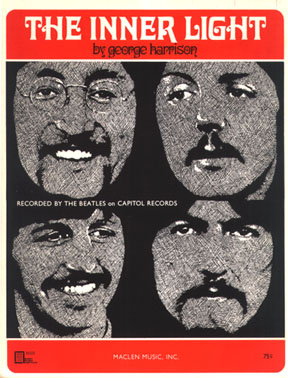 Shortly after their arrival in the studio on this day at 2:30, the first order of business was adding the final touch to George's Indian influenced “The Inner Light,” John and Paul overdubbing a small snatch of backing vocals to the final lyric of the song. After a mono mix of “The Inner Light” was created, they turned their attention back to “Across The Universe,” this being the focus for the remainder of the day. Shortly after their arrival in the studio on this day at 2:30, the first order of business was adding the final touch to George's Indian influenced “The Inner Light,” John and Paul overdubbing a small snatch of backing vocals to the final lyric of the song. After a mono mix of “The Inner Light” was created, they turned their attention back to “Across The Universe,” this being the focus for the remainder of the day.
 Engineer Geoff Emerick, in his book “Here, There And Everywhere,” recounts his observances of this day. “We started overdubbing onto another track that Ken (Scott) had begun in my absence. “Across The Universe' was probably the gentlest, sweetest John Lennon song I'd heard to date, and it took me very much by surprise. At around the time of Brian's death, the four Beatles had been studying with the Maharishi Mahesh Yogi, and on this night it occurred to me that perhaps meditation had done John some good. The song represented a drastic change for him, and it was an eye-opener for me. It was true that in recent weeks the cutting, sarcastic John Lennon had been largely absent; we were seeing a softer side in him, a side I didn't ever know existed. I knew that McCartney could be a rocker as well as a balladeer, but, up until this session, I'd pretty much just thought of Lennon as a basher. I really loved the song, and John's gentle, lyrical vocal definitely connected with me.” Engineer Geoff Emerick, in his book “Here, There And Everywhere,” recounts his observances of this day. “We started overdubbing onto another track that Ken (Scott) had begun in my absence. “Across The Universe' was probably the gentlest, sweetest John Lennon song I'd heard to date, and it took me very much by surprise. At around the time of Brian's death, the four Beatles had been studying with the Maharishi Mahesh Yogi, and on this night it occurred to me that perhaps meditation had done John some good. The song represented a drastic change for him, and it was an eye-opener for me. It was true that in recent weeks the cutting, sarcastic John Lennon had been largely absent; we were seeing a softer side in him, a side I didn't ever know existed. I knew that McCartney could be a rocker as well as a balladeer, but, up until this session, I'd pretty much just thought of Lennon as a basher. I really loved the song, and John's gentle, lyrical vocal definitely connected with me.”
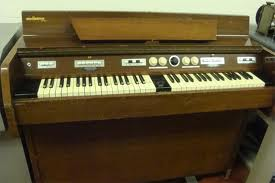 John had decided that all of the backward recorded elements from the previous session needed to be removed, including the hums. He was still not quite sure what was needed to complete the recording to his satisfaction, however, so various experiments were overdubbed onto "take eight" of the song, all of these played forward this time around. Onto track three, John played a mellotron while George Martin recorded an organ part, both of these then being wiped off of the tape and replaced by John on a wah-wah pedal electric guitar, George Harrison on maracas and Paul on piano. Onto track four of the tape, John, Paul and George recorded some high harmonies in the choruses of the song, thus wiping out the backwards bass guitar and drums from the previous session. John had decided that all of the backward recorded elements from the previous session needed to be removed, including the hums. He was still not quite sure what was needed to complete the recording to his satisfaction, however, so various experiments were overdubbed onto "take eight" of the song, all of these played forward this time around. Onto track three, John played a mellotron while George Martin recorded an organ part, both of these then being wiped off of the tape and replaced by John on a wah-wah pedal electric guitar, George Harrison on maracas and Paul on piano. Onto track four of the tape, John, Paul and George recorded some high harmonies in the choruses of the song, thus wiping out the backwards bass guitar and drums from the previous session.
 Although studio documentation does not mention it, Geoff Emerick asserts that John once again re-recorded his lead vocals for the song on this day. This apparently was once again recorded onto track one of the tape with the rhythm track played back slightly slower than normal, Geoff Emerick recalling that this vocal overdub was not an easy task. “We recorded that vocal over and over again because John was unhappy with the job he was doing, despite the fact that we, and the entire group, were effusive in our praise. It was a problematic vocal to do because of phrasing; there were just too many words to sing, so many points at which he had to take breaths. Because of that, John wasn't satisfied that he'd gotten the feeling into the words that he was hoping for, and he was a bit upset about that. The song clearly meant a lot to him and he was frustrated because it hadn't come out the way he'd heard it in his head.” Although studio documentation does not mention it, Geoff Emerick asserts that John once again re-recorded his lead vocals for the song on this day. This apparently was once again recorded onto track one of the tape with the rhythm track played back slightly slower than normal, Geoff Emerick recalling that this vocal overdub was not an easy task. “We recorded that vocal over and over again because John was unhappy with the job he was doing, despite the fact that we, and the entire group, were effusive in our praise. It was a problematic vocal to do because of phrasing; there were just too many words to sing, so many points at which he had to take breaths. Because of that, John wasn't satisfied that he'd gotten the feeling into the words that he was hoping for, and he was a bit upset about that. The song clearly meant a lot to him and he was frustrated because it hadn't come out the way he'd heard it in his head.”
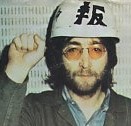 “It wasn't a very good recording,” John insisted in 1971 about the end results of this day in the studio, adding, “it was a shame because I liked the song.” “It is a lousy track of a great song,” he said in 1980. “I was so disappointed by it, The guitar is out of tune and I'm singing out of tune because I was psychologically destroyed.” Lennon had also stated: “The Beatles didn't make a good record of it. I think, subconsciously, sometimes, we, I say 'We' though I think Paul did it more than the rest of us, Paul would, sort of, subconsciously, try and destroy a great song.” “It wasn't a very good recording,” John insisted in 1971 about the end results of this day in the studio, adding, “it was a shame because I liked the song.” “It is a lousy track of a great song,” he said in 1980. “I was so disappointed by it, The guitar is out of tune and I'm singing out of tune because I was psychologically destroyed.” Lennon had also stated: “The Beatles didn't make a good record of it. I think, subconsciously, sometimes, we, I say 'We' though I think Paul did it more than the rest of us, Paul would, sort of, subconsciously, try and destroy a great song.”
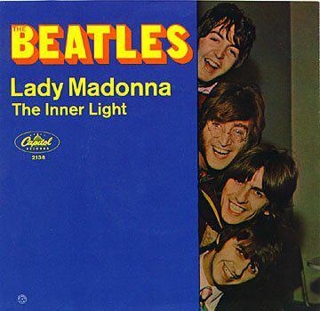 It was towards the end of this recording session that The Beatles needed to make a decision as to what two songs recorded this week would adorn the a- and b-side of their next single. John's enthusiasm for “Across The Universe” waned so dramatically because of his dissatisfaction with the recording that he opted for it not to be released at all. Therefore, Paul's recently recorded “Lady Madonna” was chosen for the a-side while George's “The Inner Light” would be the b-side, the first Harrison composition to grace a Beatles single. It was towards the end of this recording session that The Beatles needed to make a decision as to what two songs recorded this week would adorn the a- and b-side of their next single. John's enthusiasm for “Across The Universe” waned so dramatically because of his dissatisfaction with the recording that he opted for it not to be released at all. Therefore, Paul's recently recorded “Lady Madonna” was chosen for the a-side while George's “The Inner Light” would be the b-side, the first Harrison composition to grace a Beatles single.
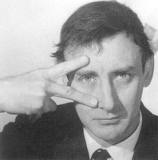 Interestingly, there was a guest in the studio that evening, one that The Beatles had long admired. Geoff Emerick, in “Here, There And Everywhere,” explains: “The legendary comedian and ex-Goon Spike Milligan (who was one of John's idols) happened to be at the session that night as a guest of George Martin's. He was so impressed with what he was hearing that he asked Lennon if the track, in its current state, could be used for helping to raise funds for a charity he was involved in. A distracted, aggrieved John simply said, 'Yeah, whatever,' and that's how 'Across The Universe' came to be released on a charity record for the World Wildlife Foundation.” Since that album wasn't released until the end of 1969, this excellent recording of “Across The Universe” remained unheard by the general public for twenty-two months. Interestingly, there was a guest in the studio that evening, one that The Beatles had long admired. Geoff Emerick, in “Here, There And Everywhere,” explains: “The legendary comedian and ex-Goon Spike Milligan (who was one of John's idols) happened to be at the session that night as a guest of George Martin's. He was so impressed with what he was hearing that he asked Lennon if the track, in its current state, could be used for helping to raise funds for a charity he was involved in. A distracted, aggrieved John simply said, 'Yeah, whatever,' and that's how 'Across The Universe' came to be released on a charity record for the World Wildlife Foundation.” Since that album wasn't released until the end of 1969, this excellent recording of “Across The Universe” remained unheard by the general public for twenty-two months.
 This session concluded at 9 pm, but a mono mix of the day's accomplishments was worked on after 10 pm by George Martin and engineers Ken Scott and Richard Lush. Two attempts were made, the second undoubtedly being the keeper, although this mono mix was shelved indefinately in the EMI library because all eventual releases of “Across The Universe” were in stereo, mono releases being discontinued by the time any version was released. This session concluded at 9 pm, but a mono mix of the day's accomplishments was worked on after 10 pm by George Martin and engineers Ken Scott and Richard Lush. Two attempts were made, the second undoubtedly being the keeper, although this mono mix was shelved indefinately in the EMI library because all eventual releases of “Across The Universe” were in stereo, mono releases being discontinued by the time any version was released.
Meanwhile, with the mono mix of the song created, the February 8th, 1968 session came to a close at 12:15 the following morning, everyone leaving the studio a little dissapointed. Everyone but Spike Milligan, that is, who had acquired a verbal commitment from John for an excellent recording to be released exclusively by him at a future time.
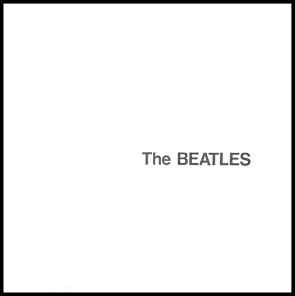 After their return from India, The Beatles worked at putting together a plethora of tracks for their next project, which resulted in the double-album simply entitled “The Beatles” (aka, the “White Album”). Because of John's disillusionment with the Maharishi, his teachings and with meditation, he returned to regular drug use and added heroin into the mix as well, his new love Yoko Ono being by his side the whole time. The result was a return to the old sarcastic, tempermental and self-indulgent John Lennon that everyone was used to experiencing in the recording studio, magnified even more perhaps because of his drug use. Although brilliant, a lot of his compositions during this period tended to be more biting and dark, “Yer Blues,” “Sexy Sadie” and “Happiness Is A Warm Gun” being prime examples. The gentle and spiritual “Across The Universe,” although unissued at the time, was nowhere near the Lennon mentality during these later 1968 sessions and, therefore, was not even considered for inclusion on the “White Album.” After their return from India, The Beatles worked at putting together a plethora of tracks for their next project, which resulted in the double-album simply entitled “The Beatles” (aka, the “White Album”). Because of John's disillusionment with the Maharishi, his teachings and with meditation, he returned to regular drug use and added heroin into the mix as well, his new love Yoko Ono being by his side the whole time. The result was a return to the old sarcastic, tempermental and self-indulgent John Lennon that everyone was used to experiencing in the recording studio, magnified even more perhaps because of his drug use. Although brilliant, a lot of his compositions during this period tended to be more biting and dark, “Yer Blues,” “Sexy Sadie” and “Happiness Is A Warm Gun” being prime examples. The gentle and spiritual “Across The Universe,” although unissued at the time, was nowhere near the Lennon mentality during these later 1968 sessions and, therefore, was not even considered for inclusion on the “White Album.”
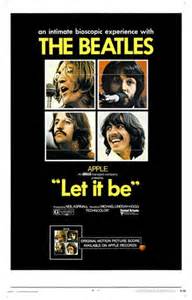 Nonetheless, when Paul insisted that they quickly prepare new material for a new project he envisioned, the filmed rehearsals for what became the "Let It Be" film and sountrack album beginning barely a month after the “White Album” had been released, John found himself scrambling for new compositions to include. “We're lazy f*ckers,” John explained in 1970, “and we've been playing for twenty years, for f*ck's sake – we're grown men, we're not going to sit around rehearsing. And we couldn't get into it, and we put down a few tracks and nobody was into it at all.” Nonetheless, when Paul insisted that they quickly prepare new material for a new project he envisioned, the filmed rehearsals for what became the "Let It Be" film and sountrack album beginning barely a month after the “White Album” had been released, John found himself scrambling for new compositions to include. “We're lazy f*ckers,” John explained in 1970, “and we've been playing for twenty years, for f*ck's sake – we're grown men, we're not going to sit around rehearsing. And we couldn't get into it, and we put down a few tracks and nobody was into it at all.”
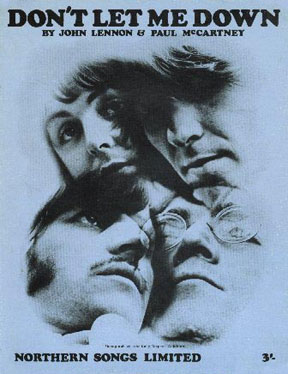 Although a couple new Lennon song ideas were fully developed from scratch during these January 1969 rehearsals, namely “Don't Let Me Down” and “Dig A Pony,” he had to dig deeper into his back catalog to come up with enough material in an attempt to match the usually prolific McCartney. Therefore, out came one of John's earliest written songs, “One After 909,” as well as the unreleased “Across The Universe.” Although a couple new Lennon song ideas were fully developed from scratch during these January 1969 rehearsals, namely “Don't Let Me Down” and “Dig A Pony,” he had to dig deeper into his back catalog to come up with enough material in an attempt to match the usually prolific McCartney. Therefore, out came one of John's earliest written songs, “One After 909,” as well as the unreleased “Across The Universe.”
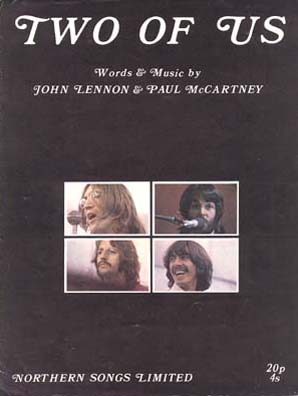 On January 6th, 1969, their third day of rehearsals at Twickenham Film Studios for what became the “Let It Be” project, John re-introduced “Across The Universe” to the group. They ran through two rough rehearsals of the song with John on electric guitar and lead vocals (flubbing the lyrics here and there), Paul on bass and harmony vocals (sung throughout some of the verses as well as the choruses), George on electric guitar through a wah-wah pedal, and Ringo tapping out the beat on tom toms as he had done on the original recording. The song was then dropped for the time being, much attention being given to “Don't Let Me Down” and “Two Of Us” before the rehearsal ended. On January 6th, 1969, their third day of rehearsals at Twickenham Film Studios for what became the “Let It Be” project, John re-introduced “Across The Universe” to the group. They ran through two rough rehearsals of the song with John on electric guitar and lead vocals (flubbing the lyrics here and there), Paul on bass and harmony vocals (sung throughout some of the verses as well as the choruses), George on electric guitar through a wah-wah pedal, and Ringo tapping out the beat on tom toms as he had done on the original recording. The song was then dropped for the time being, much attention being given to “Don't Let Me Down” and “Two Of Us” before the rehearsal ended.
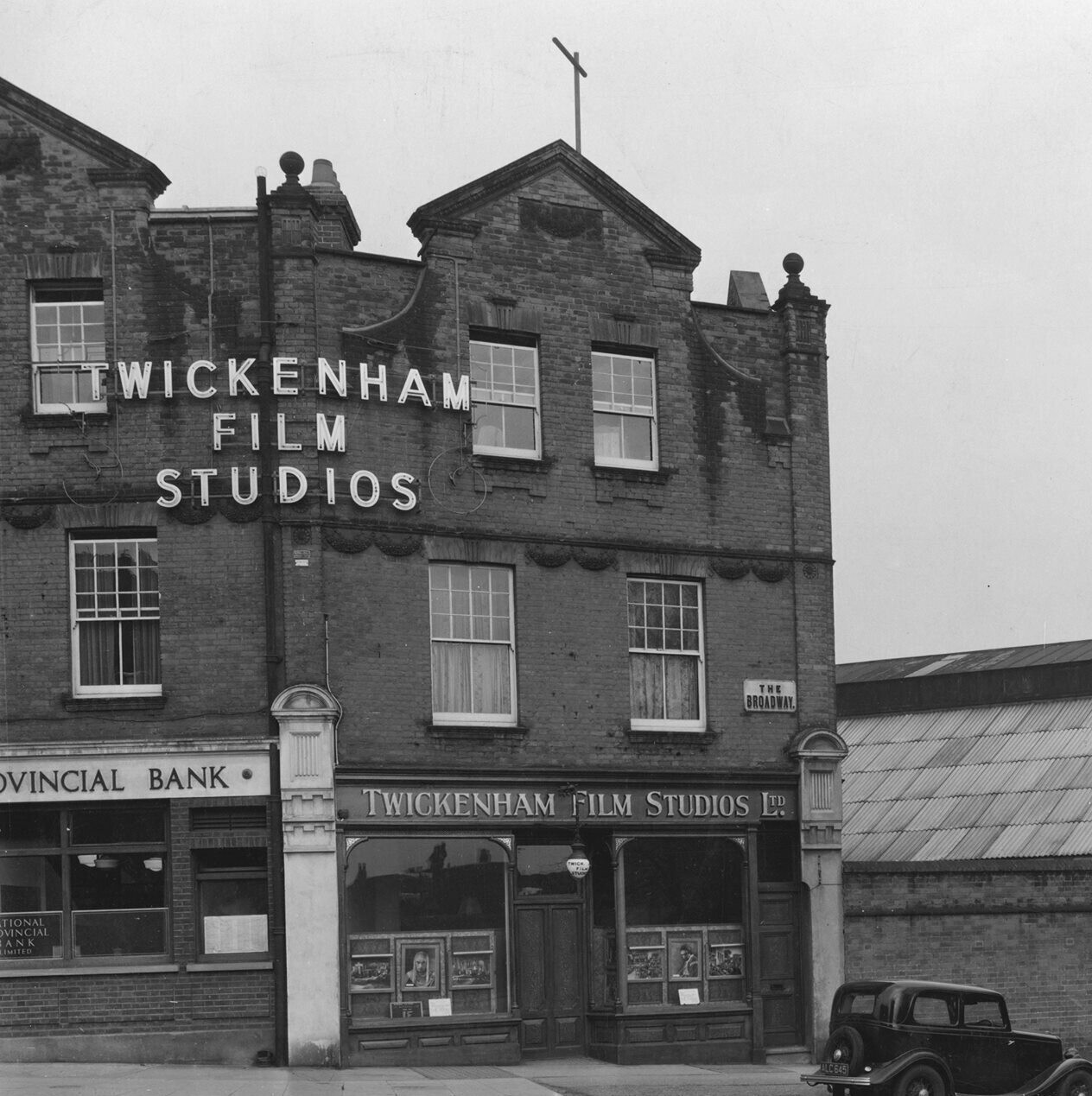 The following day, January 7th, 1969, saw the group return to “Across The Universe” at Twickenham Studios, running through the song twelve times. Concerning perfecting the song for the "Let It Be" project, John is heard saying, “I think we can do it almost the same way, just better. Anyway, just even to do it because I think it's just a waste banishing it. I'd sooner stick it in here.” Preferring to contribute more rockers to their song list, John bemoans the fact that “Across The Universe” is “another slow one – I know we'll knock off a couple of fast ones. If I just wasn't so tired when I got in.” George then assures him that it's alright to contribute some slower songs. The following day, January 7th, 1969, saw the group return to “Across The Universe” at Twickenham Studios, running through the song twelve times. Concerning perfecting the song for the "Let It Be" project, John is heard saying, “I think we can do it almost the same way, just better. Anyway, just even to do it because I think it's just a waste banishing it. I'd sooner stick it in here.” Preferring to contribute more rockers to their song list, John bemoans the fact that “Across The Universe” is “another slow one – I know we'll knock off a couple of fast ones. If I just wasn't so tired when I got in.” George then assures him that it's alright to contribute some slower songs.
Since John wasn't sure of the lyrics the day before, he had requested a set of lyrics to be sent to him from the Apple office. “What's the first line?” he asked before the lyric sheet arrives. When he receives them from Apple employee Eric Brown, he reviews the lyrics and questions his own poetry, dumbfoundedly asking “tumble blindly??”
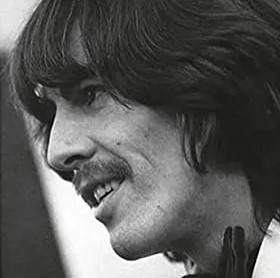 While discussing the earlier recording of the song and why he was dissatisfied with those results, John explains: “When we were doing it last time, we did it alright in the end. The thing I don't like about the version we did, is we didn't dig it the time we did it. All that tamboura was great...Got your taboura, then?” George replies: “I liked those girls singing as well, which you didn't like. The whole record is great, really. It's just another idea, another way of doing it.” John then adds: “I haven't heard it in a long time.” While discussing the earlier recording of the song and why he was dissatisfied with those results, John explains: “When we were doing it last time, we did it alright in the end. The thing I don't like about the version we did, is we didn't dig it the time we did it. All that tamboura was great...Got your taboura, then?” George replies: “I liked those girls singing as well, which you didn't like. The whole record is great, really. It's just another idea, another way of doing it.” John then adds: “I haven't heard it in a long time.”
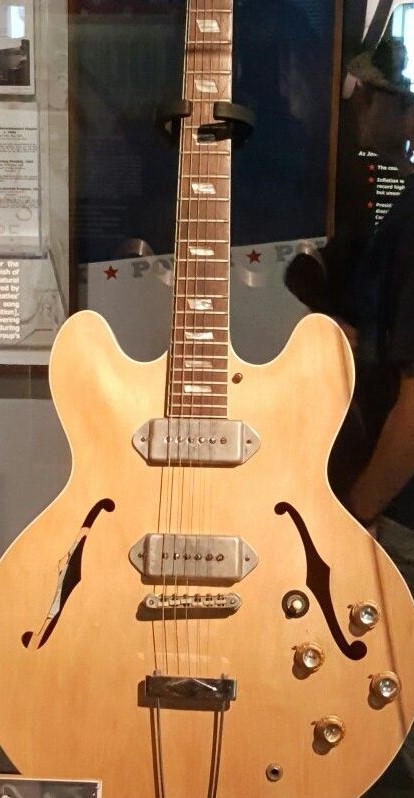 The extensive rehearsals on this day show the song becoming somewhat tighter, although attention did wane after awhile as these renditions started to sound lethargic. John plays his Epiphone Casino electric guitar once again, performing the guitar intro himself on the earlier runthroughs as he had done on the original recording. He sings all of the words perfectly on this day, thanks to the lyric sheet being sent over. As humorously seen in Peter Jackson's "Get Back" series, the sound crew at Twickenham was having a hard time getting a good level for John's vocal at this point because he had the song's lyric sheet draped over his microphone, Paul having to point the problem out to him. The extensive rehearsals on this day show the song becoming somewhat tighter, although attention did wane after awhile as these renditions started to sound lethargic. John plays his Epiphone Casino electric guitar once again, performing the guitar intro himself on the earlier runthroughs as he had done on the original recording. He sings all of the words perfectly on this day, thanks to the lyric sheet being sent over. As humorously seen in Peter Jackson's "Get Back" series, the sound crew at Twickenham was having a hard time getting a good level for John's vocal at this point because he had the song's lyric sheet draped over his microphone, Paul having to point the problem out to him.
 Paul continues to play his Hofner bass and harmonize throughout the verses while singing in unison with John during the “nothing's gonna change my world” section of each chorus. John counters this with “I wish it f*cking would” on one version, this possibly being his response to the disagreements they were having earlier in the day. George continues his use of electric guitar with a wah-wah pedal, sometimes playing the guitar introduction instead of John. Ringo plays a steady full drum pattern in the verses, sometimes losing the beat with the changes in the time signatures, stops at the beginning of the chorus to highlight the “nothing's gonna change” vocals, and then focuses on his toms for the remainder of each chorus. Paul continues to play his Hofner bass and harmonize throughout the verses while singing in unison with John during the “nothing's gonna change my world” section of each chorus. John counters this with “I wish it f*cking would” on one version, this possibly being his response to the disagreements they were having earlier in the day. George continues his use of electric guitar with a wah-wah pedal, sometimes playing the guitar introduction instead of John. Ringo plays a steady full drum pattern in the verses, sometimes losing the beat with the changes in the time signatures, stops at the beginning of the chorus to highlight the “nothing's gonna change” vocals, and then focuses on his toms for the remainder of each chorus.
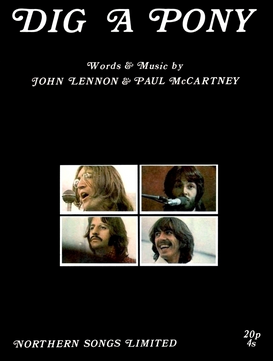 An edit of two rehearsals from this day is featured in the “Let It Be” movie. It begins with John requesting to hear their original recording of "Across The Universe" from February of 1968, saying: "We can start hearing the tapes now - like do it and hear what it is." In this footage, we can here witness Paul being unattentive to John's song, possibly being tired (or high) at this point or simply just not very interested. He fumbles through some bass lines while John is talking, as if he wasn't even paying attention to him at all. "Is it just 'cause we don't feel like it," John asks, "or is it - does the guitar sound alright really? Should we just try it?" he pleads. "We'll just have less of those 'nothing's gonna change' bits. We'll just have one each time and two at the end." The movie shows them going through the second verse and chorus before cutting to John's attempt to interest Paul in his composition "Dig A Pony," which also falls flat soon after. An edit of two rehearsals from this day is featured in the “Let It Be” movie. It begins with John requesting to hear their original recording of "Across The Universe" from February of 1968, saying: "We can start hearing the tapes now - like do it and hear what it is." In this footage, we can here witness Paul being unattentive to John's song, possibly being tired (or high) at this point or simply just not very interested. He fumbles through some bass lines while John is talking, as if he wasn't even paying attention to him at all. "Is it just 'cause we don't feel like it," John asks, "or is it - does the guitar sound alright really? Should we just try it?" he pleads. "We'll just have less of those 'nothing's gonna change' bits. We'll just have one each time and two at the end." The movie shows them going through the second verse and chorus before cutting to John's attempt to interest Paul in his composition "Dig A Pony," which also falls flat soon after.
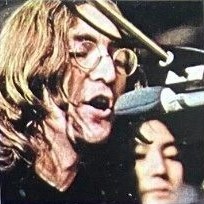 Other arrangement discussions for the song took place on this day. Since John liked the tamboura drone on the original recording, he stepped over to an organ to attempt something similar, giving up rather quickly because he said it was “too hard.” When an issue of speeding the tempo was suggested, John stated “It couldn't be any other way...I couldn't get the words out. There's no breath.” As for George's wah-wah guitar phrases, John gives him free rein by saying, “Whatever you'd like. You're on your own there.” Other arrangement discussions for the song took place on this day. Since John liked the tamboura drone on the original recording, he stepped over to an organ to attempt something similar, giving up rather quickly because he said it was “too hard.” When an issue of speeding the tempo was suggested, John stated “It couldn't be any other way...I couldn't get the words out. There's no breath.” As for George's wah-wah guitar phrases, John gives him free rein by saying, “Whatever you'd like. You're on your own there.”
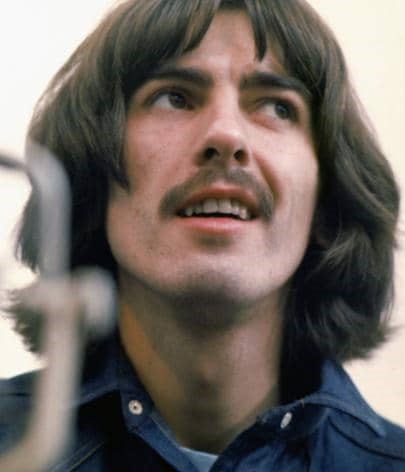 Towards the conclusion of the session on this day, John got his wish to hear the original recording of “Across The Universe” that they had recorded back in February of 1968. An acetate pressing of the song materialized at Twickenham Studios and was played for the group, this mix being heard by them for the first time. Interestingly, the bird sound effects were already in place on this acetate, the liner notes in the 2009 released box set “The Beatles In Mono” specifying that this mono mix was made in January of 1969, which means it was created just prior to this day, January 7th, 1969. George is heard complaining, “I don't like that flapping. It takes too long before it does it,” probably meaning until the song starts. The group discusses the recording further while they mildly attempt to play along with the acetate. Towards the conclusion of the session on this day, John got his wish to hear the original recording of “Across The Universe” that they had recorded back in February of 1968. An acetate pressing of the song materialized at Twickenham Studios and was played for the group, this mix being heard by them for the first time. Interestingly, the bird sound effects were already in place on this acetate, the liner notes in the 2009 released box set “The Beatles In Mono” specifying that this mono mix was made in January of 1969, which means it was created just prior to this day, January 7th, 1969. George is heard complaining, “I don't like that flapping. It takes too long before it does it,” probably meaning until the song starts. The group discusses the recording further while they mildly attempt to play along with the acetate.
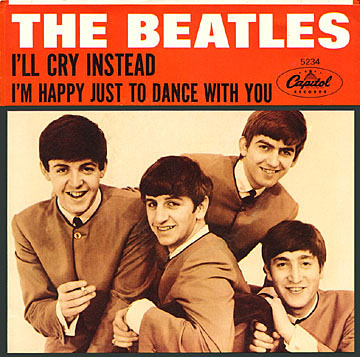 Two days later, January 9th, 1969, The Beatles ran through twelve more rehearsals of “Across The Universe,” undoubtedly spurred on by hearing the original recording two days earlier. Unfortunately, these rehearsals were rough unfocused performances that were occasionaly strewn with semi-humorous lyrical changes, a bit of an interesting tounge-in-cheek fast version with a rhythm somewhat similar to "I'll Cry Instead" being seen in Peter Jackson's "Get Back" series. Two days later, January 9th, 1969, The Beatles ran through twelve more rehearsals of “Across The Universe,” undoubtedly spurred on by hearing the original recording two days earlier. Unfortunately, these rehearsals were rough unfocused performances that were occasionaly strewn with semi-humorous lyrical changes, a bit of an interesting tounge-in-cheek fast version with a rhythm somewhat similar to "I'll Cry Instead" being seen in Peter Jackson's "Get Back" series.
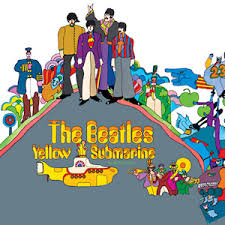 On January 21st, 1969, after George had quit The Beatles and then returned to continue the rehearsals at Apple Studios on Savile Row in London, a decision was made to discontinue rehearsals of “Across The Universe.” The reason for this decision was the complaints that were coming in regarding the “Yellow Submarine” soundtrack album, which had been released four days prior. This album contained only four new Beatles tracks, along with the film's title track, “All You Need Is Love,” and George Martin's orchestral score. The Beatles were accused, for the first time, of not giving the public good value for their money. In response to this, the band decided to release the four new soundtrack songs, along with a bonus track, as a lesser-priced EP, to give their fans the option of purchasing the new material without having to buy the whole soundtrack album. The bonus track chosen was the February 1968 recorded version of “Across The Universe” that they had just listened to at Twickenham Studios on January 7th, 1969. Therefore, there would be no need to include a newly recorded version of the song on the “Let It Be” project. During rehearsals for "Dig A Pony" on this day, however, Paul began reciting John's lyrics for "Across The Universe," John humorously finishing a verse with, "as it creeps away across my underpants." On January 21st, 1969, after George had quit The Beatles and then returned to continue the rehearsals at Apple Studios on Savile Row in London, a decision was made to discontinue rehearsals of “Across The Universe.” The reason for this decision was the complaints that were coming in regarding the “Yellow Submarine” soundtrack album, which had been released four days prior. This album contained only four new Beatles tracks, along with the film's title track, “All You Need Is Love,” and George Martin's orchestral score. The Beatles were accused, for the first time, of not giving the public good value for their money. In response to this, the band decided to release the four new soundtrack songs, along with a bonus track, as a lesser-priced EP, to give their fans the option of purchasing the new material without having to buy the whole soundtrack album. The bonus track chosen was the February 1968 recorded version of “Across The Universe” that they had just listened to at Twickenham Studios on January 7th, 1969. Therefore, there would be no need to include a newly recorded version of the song on the “Let It Be” project. During rehearsals for "Dig A Pony" on this day, however, Paul began reciting John's lyrics for "Across The Universe," John humorously finishing a verse with, "as it creeps away across my underpants."
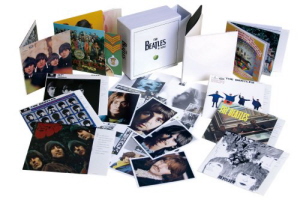 George had not been informed of this decision and, when he asked John if they were going to continue working on “Across The Universe” during their January 23rd, 1969 session at Apple Studios, it was explained to him that the older version of the song would be released soon instead. This being the case, The Beatles never touched the song again. Incidentally, a master tape of this "Yellow Submarine EP," which was compiled and banded on March 13th, 1969, is still in the EMI library. Instead of this EP being readied for release, the idea was dropped, the mono mix of “Across The Universe” from this EP eventually being included in the above mentioned “The Beatles In Mono” box set. George had not been informed of this decision and, when he asked John if they were going to continue working on “Across The Universe” during their January 23rd, 1969 session at Apple Studios, it was explained to him that the older version of the song would be released soon instead. This being the case, The Beatles never touched the song again. Incidentally, a master tape of this "Yellow Submarine EP," which was compiled and banded on March 13th, 1969, is still in the EMI library. Instead of this EP being readied for release, the idea was dropped, the mono mix of “Across The Universe” from this EP eventually being included in the above mentioned “The Beatles In Mono” box set.
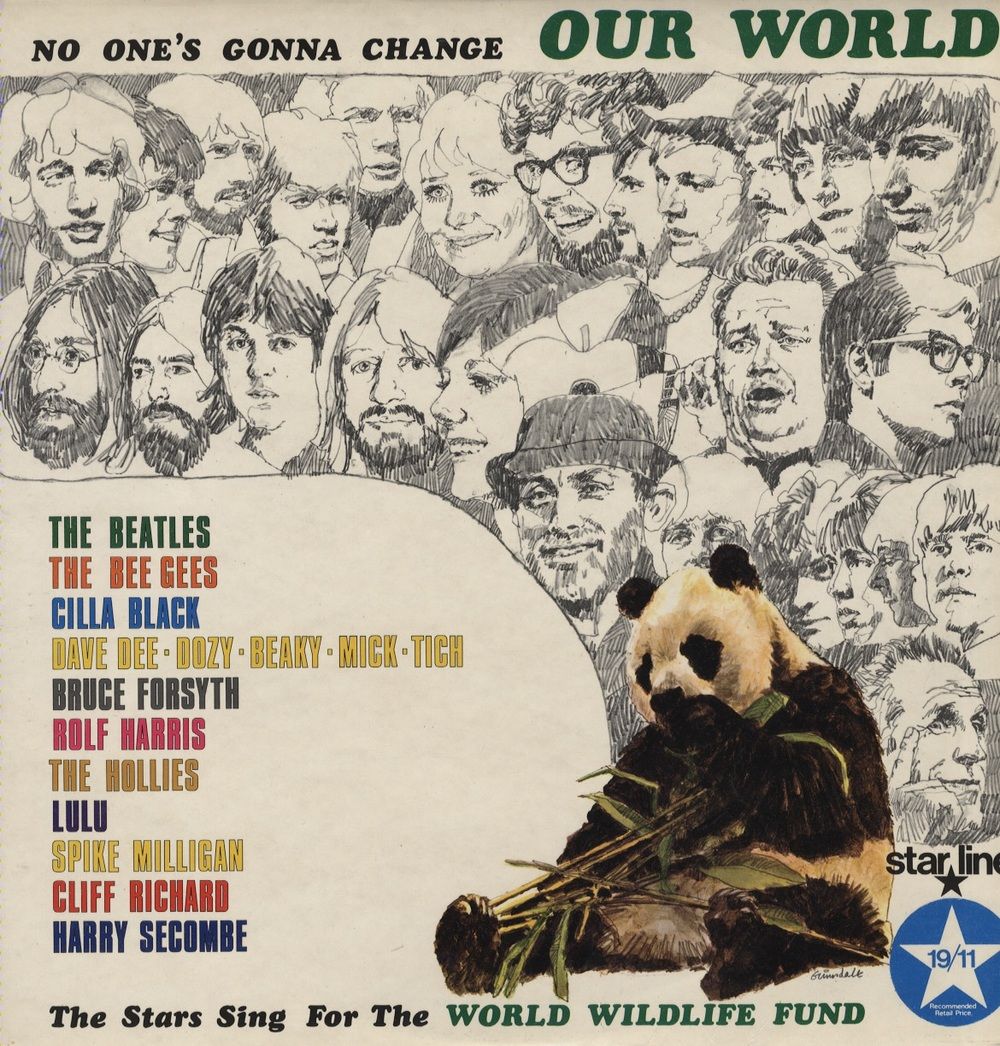 When asked by Paul on January 7th, 1969 about the status of the World Wildlife Fund charity album, John replied, “they haven't got it together yet.” On October 2nd, 1969, however, George Martin and engineers Jeff Jarratt and Alan Parsons met at EMI Studios in Room 4 at 9:30 am to create the stereo mix of “Across The Universe” for inclusion on this LP. Named “No One's Gonna Change Our World,” referencing the key line in John's song, this album featured tracks by other notable British acts such as The Hollies, The Bee Gees, Cliff Richard and Cilla Black, although the appearance of The Beatles was clearly the focal point. When asked by Paul on January 7th, 1969 about the status of the World Wildlife Fund charity album, John replied, “they haven't got it together yet.” On October 2nd, 1969, however, George Martin and engineers Jeff Jarratt and Alan Parsons met at EMI Studios in Room 4 at 9:30 am to create the stereo mix of “Across The Universe” for inclusion on this LP. Named “No One's Gonna Change Our World,” referencing the key line in John's song, this album featured tracks by other notable British acts such as The Hollies, The Bee Gees, Cliff Richard and Cilla Black, although the appearance of The Beatles was clearly the focal point.
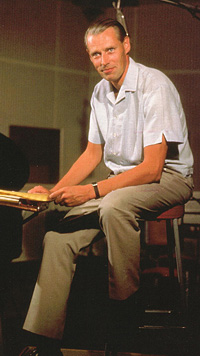 George Martin attempted two stereo mixes of the song on this day, the first without any sound effects and the second mimicking his January mono mix by incorporating bird sound effects, as well as children at a playground, at the song's beginning and then briefly near its conclusion, the source of these being the EMI sound effects tape cabinet. Curiously, for this second stereo mix, a decision was made to increase the speed of the master tape, raising the key from D major to just below D sharp in order to lift the pitch of John's voice, possibly a suggestion from the singer who was never happy with his vocal sound on record. Nonetheless, by 11 am, the second mix was chosen to be the opening track of this British LP, the entire album being banded together the following day by George Martin at EMI Studios. The album was released in the UK on December 12th, 1969. George Martin attempted two stereo mixes of the song on this day, the first without any sound effects and the second mimicking his January mono mix by incorporating bird sound effects, as well as children at a playground, at the song's beginning and then briefly near its conclusion, the source of these being the EMI sound effects tape cabinet. Curiously, for this second stereo mix, a decision was made to increase the speed of the master tape, raising the key from D major to just below D sharp in order to lift the pitch of John's voice, possibly a suggestion from the singer who was never happy with his vocal sound on record. Nonetheless, by 11 am, the second mix was chosen to be the opening track of this British LP, the entire album being banded together the following day by George Martin at EMI Studios. The album was released in the UK on December 12th, 1969.
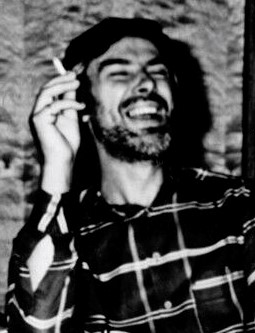 With the “Let It Be” film being prepared for release in early 1970, engineer Glyn Johns was initially given the task of preparing the soundtrack album. Because there was a segment in the movie that shows The Beatles rehearsing “Across The Universe,” it was decided that it should also be included on the album. Since no proper recording of the song was done during their early January rehearsals, Glyn Johns had no choice but to revert back to the February 1968 recording. With the “Let It Be” film being prepared for release in early 1970, engineer Glyn Johns was initially given the task of preparing the soundtrack album. Because there was a segment in the movie that shows The Beatles rehearsing “Across The Universe,” it was decided that it should also be included on the album. Since no proper recording of the song was done during their early January rehearsals, Glyn Johns had no choice but to revert back to the February 1968 recording.
 On January 5th, 1970, Glyn Johns entered Olympic Sound Studios in London to create a suitable mix of the song. Since the above mentioned charity album had just been released, his intentions were to differ this mix from what many fans may have become familiar with. Omiting the bird sound effects, he created a stereo mix of "take eight" running at the correct speed but without John, Paul and George's backing vocals on track four of the tape. He undoubtedly also wanted to omit the backing vocals of Lizzie Bravo and Gayleen Pease but, since their performance was included on the reduction mix of "take seven," which was one track one of the tape, their singing couldn't be mixed out. To make the song fit in with the loose atmosphere of the project, Glyn Johns kept John's “Are you alright, Richie?” at the beginning of the recording. He also faded the song slightly early to provide a crossfade into the reprise of “Get Back” that ended the album. Glyn John's attempt at putting this soundtrack album together was shelved, however, so this mix of “Across The Universe” never saw the light of day until its inclusion in Anniversary editions of the "Let It Be" album in 2021. On January 5th, 1970, Glyn Johns entered Olympic Sound Studios in London to create a suitable mix of the song. Since the above mentioned charity album had just been released, his intentions were to differ this mix from what many fans may have become familiar with. Omiting the bird sound effects, he created a stereo mix of "take eight" running at the correct speed but without John, Paul and George's backing vocals on track four of the tape. He undoubtedly also wanted to omit the backing vocals of Lizzie Bravo and Gayleen Pease but, since their performance was included on the reduction mix of "take seven," which was one track one of the tape, their singing couldn't be mixed out. To make the song fit in with the loose atmosphere of the project, Glyn Johns kept John's “Are you alright, Richie?” at the beginning of the recording. He also faded the song slightly early to provide a crossfade into the reprise of “Get Back” that ended the album. Glyn John's attempt at putting this soundtrack album together was shelved, however, so this mix of “Across The Universe” never saw the light of day until its inclusion in Anniversary editions of the "Let It Be" album in 2021.
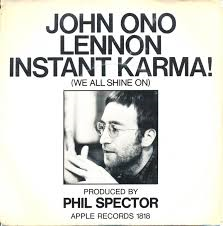 Due to John and George's recent acquaintence with producer Phil Spector during the recording of Lennon's “Instant Karma,” a decision was made to recruit him to oversee the “Let It Be” soundtrack album. As for “Across The Universe,” Spector, along with engineers Peter Bown and Roger Ferris, took his first crack at creating a stereo mix on March 23rd, 1970, in Room 4 of EMI Studios. He created eight stereo mixes of the song from the same "take eight" master tape of February 8th, 1968. These mixes, as it turned out, were only preliminary and were never used, Spector coming up with another plan for a later session. Due to John and George's recent acquaintence with producer Phil Spector during the recording of Lennon's “Instant Karma,” a decision was made to recruit him to oversee the “Let It Be” soundtrack album. As for “Across The Universe,” Spector, along with engineers Peter Bown and Roger Ferris, took his first crack at creating a stereo mix on March 23rd, 1970, in Room 4 of EMI Studios. He created eight stereo mixes of the song from the same "take eight" master tape of February 8th, 1968. These mixes, as it turned out, were only preliminary and were never used, Spector coming up with another plan for a later session.
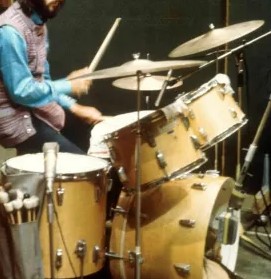 This later session occurred on April 1st, 1970, in EMI Studio One, beginning at 7 pm and ending at an undocumented time well after midnight. A total of 50 musicians and vocalists, including Ringo on drums, filed into the cavernous Studio One, while the sound was fed into the control room of Studio Three to be captured on tape. After Spector, along with engineers Peter Bown and Richard Lush, made a reduction mix of The Beatles' February recording to an eight-track tape, this becoming "take 9," it was piped into the headphones of the performers to assist arranger Richard Hewson in conducting them through the score he had prepared for the song. The reduction mix of The Beatles original performance filled the first three tracks of the final eight-track tape as follows: John's new lead vocal and his acoustic guitar and Ringo's tom-toms from the rhythm track (track one), George's tamboura and the teenage girls' backing vocals (track two), and the overdubs of Paul's piano, John's wah-wah pedal guitar and George's maracas (track three). The Beatle harmonies that occur in each chorus that were on track four of the four-track tape were deemed unnecessary. This later session occurred on April 1st, 1970, in EMI Studio One, beginning at 7 pm and ending at an undocumented time well after midnight. A total of 50 musicians and vocalists, including Ringo on drums, filed into the cavernous Studio One, while the sound was fed into the control room of Studio Three to be captured on tape. After Spector, along with engineers Peter Bown and Richard Lush, made a reduction mix of The Beatles' February recording to an eight-track tape, this becoming "take 9," it was piped into the headphones of the performers to assist arranger Richard Hewson in conducting them through the score he had prepared for the song. The reduction mix of The Beatles original performance filled the first three tracks of the final eight-track tape as follows: John's new lead vocal and his acoustic guitar and Ringo's tom-toms from the rhythm track (track one), George's tamboura and the teenage girls' backing vocals (track two), and the overdubs of Paul's piano, John's wah-wah pedal guitar and George's maracas (track three). The Beatle harmonies that occur in each chorus that were on track four of the four-track tape were deemed unnecessary.
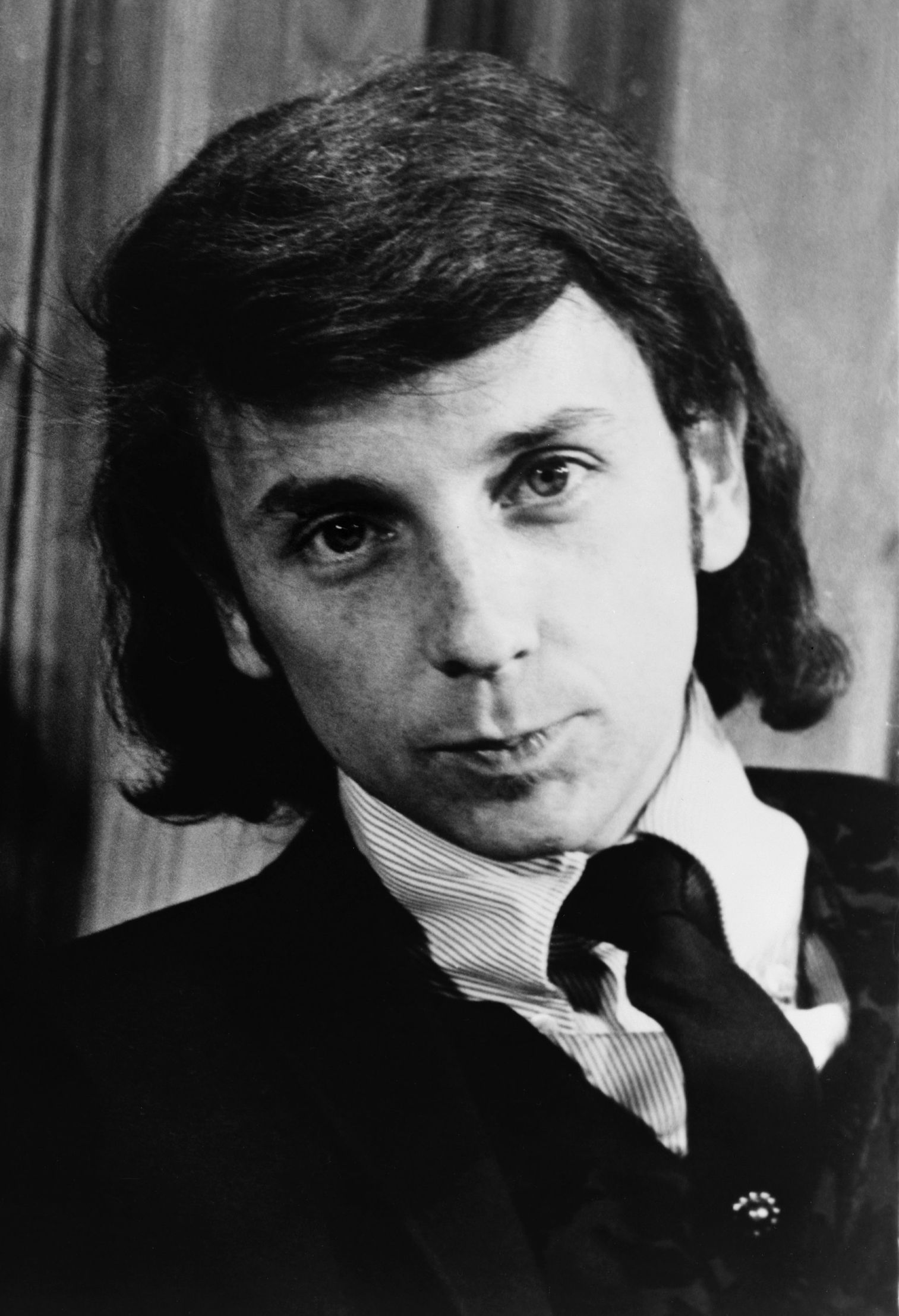 Phil Spector insisted on applying various forms of echo at the point of recording in order for him to hear his famous “wall of sound” production as the new recording was being made. Spector filled the remaining open tracks of the eight-track tape as follows: general strings (track four), violins (track five), brass, drums and acoustic guitar (track six), choir (track seven), and brass, choir and Ringo's drums (track eight). Phil Spector insisted on applying various forms of echo at the point of recording in order for him to hear his famous “wall of sound” production as the new recording was being made. Spector filled the remaining open tracks of the eight-track tape as follows: general strings (track four), violins (track five), brass, drums and acoustic guitar (track six), choir (track seven), and brass, choir and Ringo's drums (track eight).
.jpg) The following day, April 2nd, 1970, was devoted to creating the final stereo mixes for the “Let It Be” soundtrack album. Phil Spector and engineers Peter Bown and Roger Ferris entered Room 4 of EMI Studios to create mixes of the three songs that received orcherstal overdubs the previous day. In the case of “Across The Universe,” the tape was slowed down, adding nine seconds to the song and dropping its key from D Major to D-Flat Major in the process. In order to remove the backing vocals of Lizzie Bravo and Gayleen Pease, Spector made sure to fade out track two (which also contained George's tamboura) during the choruses, the orchestration and addition of new acoustic guitars, as well as Ringo's drums, John's tone pedal guitar and George's maracas from track three, filling out the arrangement nicely. This became the version of "Across The Universe" that the general public is most familiar with to this day. The following day, April 2nd, 1970, was devoted to creating the final stereo mixes for the “Let It Be” soundtrack album. Phil Spector and engineers Peter Bown and Roger Ferris entered Room 4 of EMI Studios to create mixes of the three songs that received orcherstal overdubs the previous day. In the case of “Across The Universe,” the tape was slowed down, adding nine seconds to the song and dropping its key from D Major to D-Flat Major in the process. In order to remove the backing vocals of Lizzie Bravo and Gayleen Pease, Spector made sure to fade out track two (which also contained George's tamboura) during the choruses, the orchestration and addition of new acoustic guitars, as well as Ringo's drums, John's tone pedal guitar and George's maracas from track three, filling out the arrangement nicely. This became the version of "Across The Universe" that the general public is most familiar with to this day.
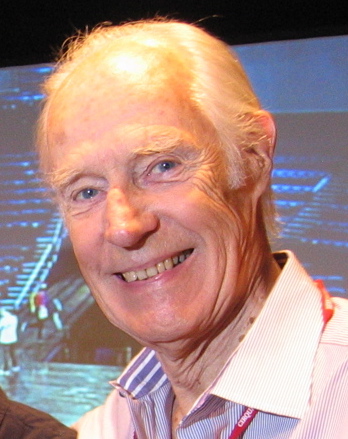 Sometime in 1996, George Martin and Geoff Emerick returned to EMI Studios (now Abbey Road Studios) to create a stereo mix of "take two" of “Across The Universe” as recorded on February 7th, 1968. This gorgeous rendition, with George's sitar introduction and dual acoustic guitar work from John and Paul, shows a glimpse of the work-in-progress of this song. Sometime in 1996, George Martin and Geoff Emerick returned to EMI Studios (now Abbey Road Studios) to create a stereo mix of "take two" of “Across The Universe” as recorded on February 7th, 1968. This gorgeous rendition, with George's sitar introduction and dual acoustic guitar work from John and Paul, shows a glimpse of the work-in-progress of this song.
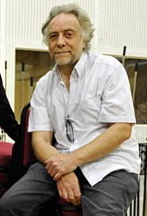 Then in 2003, the engineering team of Paul Hicks, Guy Massey and Allan Rouse returned to the master tapes of "Across The Universe" to create a new mix for the album “Let It Be...Naked.” John's acoustic guitar, Ringo's subtle drums and George's tamboura from February 7th, along with John's re-recorded lead vocal from February 8th, are the only elements used for this rendition, although much delay and/or studio manipulation was introduced to the mix as the track progresses. This mix was created at the proper speed, unlike the sped up World Wildlife version and the slowed down “Let It Be” version. Beatle fans could finally hear the song in the proper key and tempo for the first time. Then in 2003, the engineering team of Paul Hicks, Guy Massey and Allan Rouse returned to the master tapes of "Across The Universe" to create a new mix for the album “Let It Be...Naked.” John's acoustic guitar, Ringo's subtle drums and George's tamboura from February 7th, along with John's re-recorded lead vocal from February 8th, are the only elements used for this rendition, although much delay and/or studio manipulation was introduced to the mix as the track progresses. This mix was created at the proper speed, unlike the sped up World Wildlife version and the slowed down “Let It Be” version. Beatle fans could finally hear the song in the proper key and tempo for the first time.
 As a sidenote, a section of the bird sound effects from the World Wildlife version of the song was added to the new mix of “Because” as heard on the Beatles 2006 compilation album “Love.” Sometime between 2004 and 2006, George Martin and his son Giles Martin thought it would be interesting to add this element to the opening track on the album. As a sidenote, a section of the bird sound effects from the World Wildlife version of the song was added to the new mix of “Because” as heard on the Beatles 2006 compilation album “Love.” Sometime between 2004 and 2006, George Martin and his son Giles Martin thought it would be interesting to add this element to the opening track on the album.
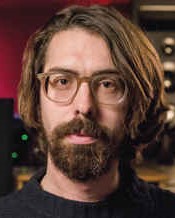 Sometime in 2018, Giles Martin, along with engineer Sam Okell, brought out the master tape of “Across The Universe” once again to create a stereo mix of "take six" for inclusion in the "Super Deluxe" 50th Anniversary edition of the “White Album.” Since it was recorded roughly during the time of the “White Album” sessions, it was decided to include an outtake of this song in the package. Sometime in 2018, Giles Martin, along with engineer Sam Okell, brought out the master tape of “Across The Universe” once again to create a stereo mix of "take six" for inclusion in the "Super Deluxe" 50th Anniversary edition of the “White Album.” Since it was recorded roughly during the time of the “White Album” sessions, it was decided to include an outtake of this song in the package.
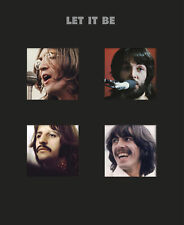 Sometime in 2021, Giles Martin and engineer Sam Okell returned to the master tapes of "Across The Universe" to create a new mix for inclusion on an Anniversary version of the "Let It Be" album available in various editions. Interestingly, Giles Martin did not mix down track two of the master tape in this mix as Phil Spector had done in 1970, the backing vocals of Lizzie Brazo and Gayleen Pease and George's tamboura being detected on this new mix. A remastered version of the 1970 Glyn Johns mix of the song as included in his proposed 1970 "Get Back" album was also included in this Anniversary version of the "Let It Be" album. Sometime in 2021, Giles Martin and engineer Sam Okell returned to the master tapes of "Across The Universe" to create a new mix for inclusion on an Anniversary version of the "Let It Be" album available in various editions. Interestingly, Giles Martin did not mix down track two of the master tape in this mix as Phil Spector had done in 1970, the backing vocals of Lizzie Brazo and Gayleen Pease and George's tamboura being detected on this new mix. A remastered version of the 1970 Glyn Johns mix of the song as included in his proposed 1970 "Get Back" album was also included in this Anniversary version of the "Let It Be" album.
Song Structure and Style
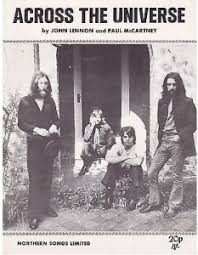 The structure of “Across The Universe” is an interesting mix of folk and Indian elements predominently in 4/4 time with some disruptions along the way. The basic format amounts to 'verse/ verse/ pre-chorus/ chorus/ verse/ verse/ pre-chorus/ chorus/ verse/ verse/ pre-chorus/ chorus' (or aabcaabcaabc) with a separate intro and conclusion rounding out the structure. (Note here that we will be analyzing the most commonly known version of the song, this being the one contained on the multi-platinum selling “Let It Be” soundtrack album.) The structure of “Across The Universe” is an interesting mix of folk and Indian elements predominently in 4/4 time with some disruptions along the way. The basic format amounts to 'verse/ verse/ pre-chorus/ chorus/ verse/ verse/ pre-chorus/ chorus/ verse/ verse/ pre-chorus/ chorus' (or aabcaabcaabc) with a separate intro and conclusion rounding out the structure. (Note here that we will be analyzing the most commonly known version of the song, this being the one contained on the multi-platinum selling “Let It Be” soundtrack album.)
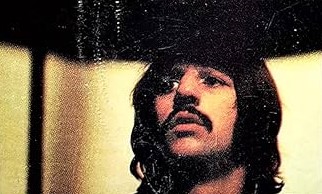 A three-measure acoustic guitar introduction starts things off. This consists of a clever rising and falling figure played by John alone in the first measure and then a simple pulsing finger-picking riff that changes chords as a segue to the first verse that follows. Ringo taps away lightly on his toms in measures two and three. As can be witnessed in the “Let It Be” movie, John skillfully and effortlessly performs this intro on guitar, although it is four measures long during these rehearsals. A three-measure acoustic guitar introduction starts things off. This consists of a clever rising and falling figure played by John alone in the first measure and then a simple pulsing finger-picking riff that changes chords as a segue to the first verse that follows. Ringo taps away lightly on his toms in measures two and three. As can be witnessed in the “Let It Be” movie, John skillfully and effortlessly performs this intro on guitar, although it is four measures long during these rehearsals.
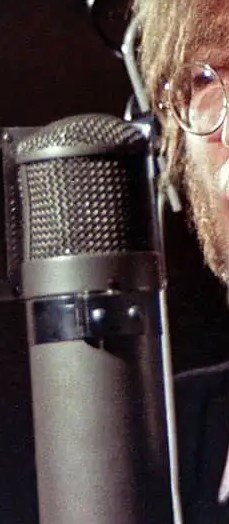 The first verse is four measures long and is in 4/4 time except for the fourth measure. Since there was hardly enough time for John to take a breath at the end of the fourth measure after the word “universe” (witness “Anthology 2”), the final measure was changed to 5/4 on the released recording in order to facilitate this. The second verse follows immediately, which is actually a variant from the first verse that we'll hear once more later in the song. The difference in this verse is that the third of the four measures is in 2/4 time, the rest being in 4/4. Also, the chords used in the final two measures here differ from the first verse. Nonetheless, John and Ringo are the only instrumentalists in these verses, all elements being treated to flanging and artificial double-tracking to create a fullness. The first verse is four measures long and is in 4/4 time except for the fourth measure. Since there was hardly enough time for John to take a breath at the end of the fourth measure after the word “universe” (witness “Anthology 2”), the final measure was changed to 5/4 on the released recording in order to facilitate this. The second verse follows immediately, which is actually a variant from the first verse that we'll hear once more later in the song. The difference in this verse is that the third of the four measures is in 2/4 time, the rest being in 4/4. Also, the chords used in the final two measures here differ from the first verse. Nonetheless, John and Ringo are the only instrumentalists in these verses, all elements being treated to flanging and artificial double-tracking to create a fullness.
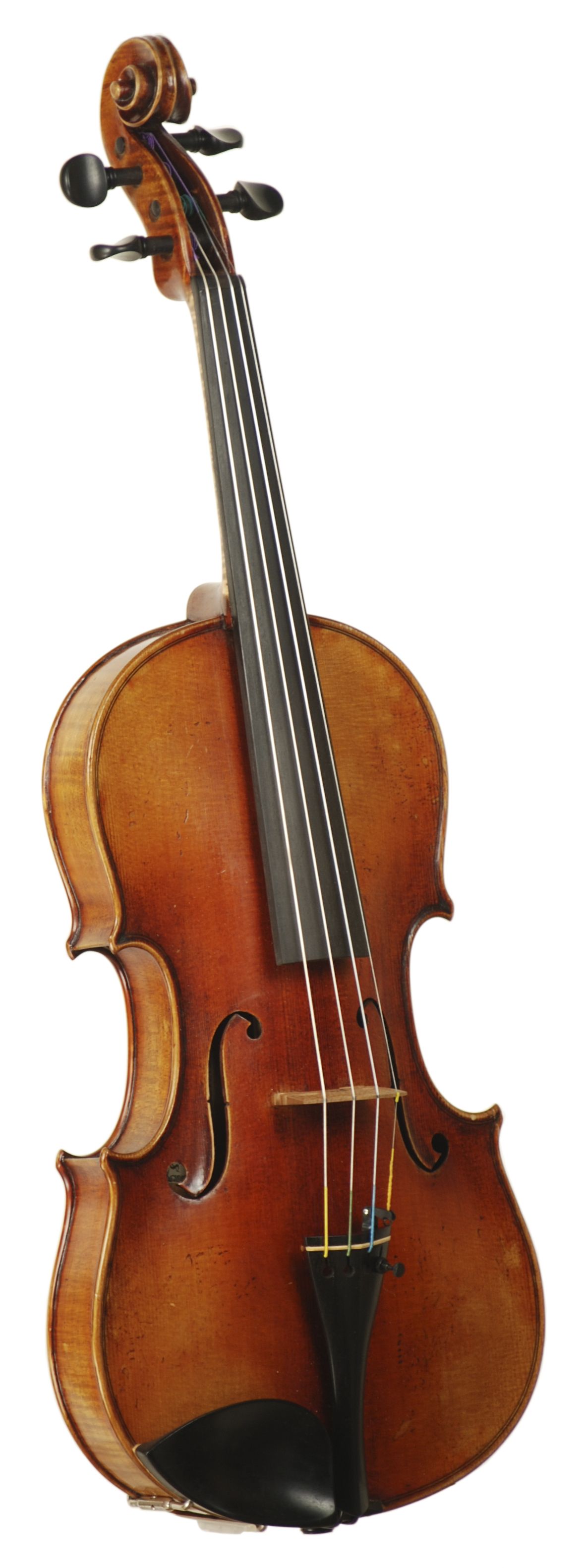 The pre-chorus is next, which is three measures long, all of them being in 4/4 time. The strings make their first appearance here starting directly on the downbeat of the first measure, along with additional acoustic guitars as recorded during Phil Spector's orchestra overdub. During the third measure, the original Beatles instrumental rhythm track is faded down, John's acoustic guitar being accentuated by Phil Spector's overdubbed unnamed guitarists and Ringo's original tom tom beats being replaced by the drums he played during the orchestral overdub. The choir appears for the first time in this final measure of the pre-chorus, during the word “Om.” The pre-chorus is next, which is three measures long, all of them being in 4/4 time. The strings make their first appearance here starting directly on the downbeat of the first measure, along with additional acoustic guitars as recorded during Phil Spector's orchestra overdub. During the third measure, the original Beatles instrumental rhythm track is faded down, John's acoustic guitar being accentuated by Phil Spector's overdubbed unnamed guitarists and Ringo's original tom tom beats being replaced by the drums he played during the orchestral overdub. The choir appears for the first time in this final measure of the pre-chorus, during the word “Om.”
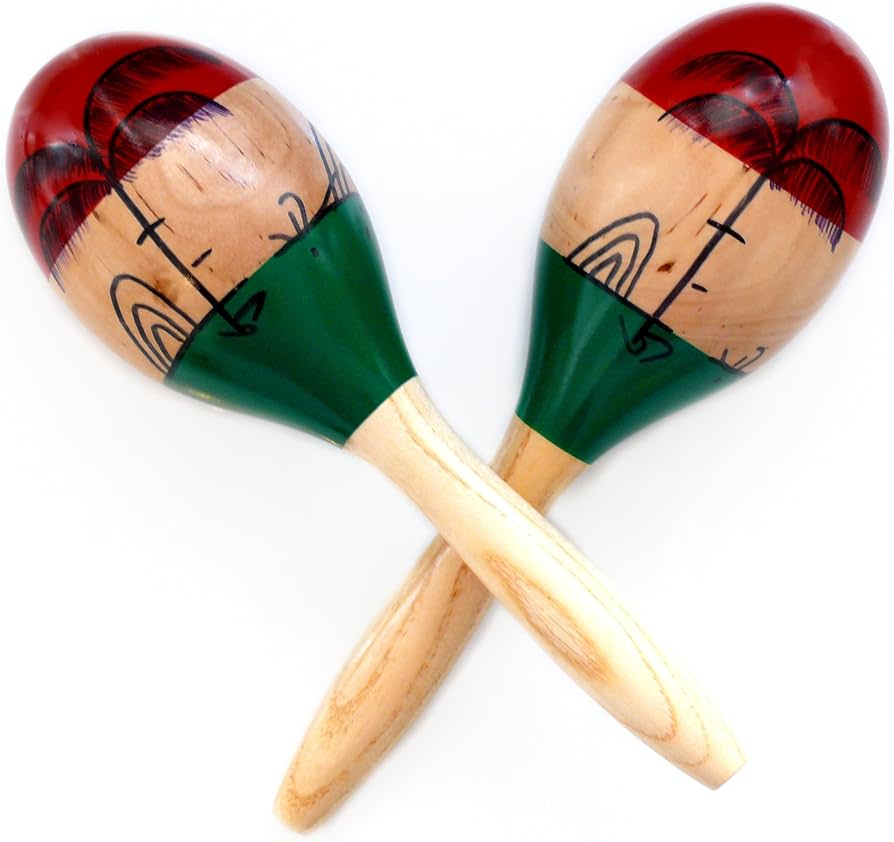 The chorus is an even four measures in length, all measures being in 4/4 time. With the Beatles instrumental rhythm track being completely faded out by this time, John's re-recorded lead vocal is to the fore, along with George's overdubbed maracas from February 8th, 1968 appearing throughout the chorus. The strings, choir, acoustic guitars and Ringo's drums from April 1st, 1970 fill out the chorus and bring it to a nice crecendo. The chorus is an even four measures in length, all measures being in 4/4 time. With the Beatles instrumental rhythm track being completely faded out by this time, John's re-recorded lead vocal is to the fore, along with George's overdubbed maracas from February 8th, 1968 appearing throughout the chorus. The strings, choir, acoustic guitars and Ringo's drums from April 1st, 1970 fill out the chorus and bring it to a nice crecendo.
 Next comes another set of verses, the third four-measure verse being strictly in 4/4 time while the fourth four-measure verse ends with a measure in 5/4 time to allow John the ability to take a breath (which he can barely do on the “Anthology 2” take). Note here also that the chords used in both of these verses are identical to those used in the first verse. The orchestra and choir are in full volume throughout these verses, the score allowing movement to display an impressive counter-melody line this time around. Next comes another set of verses, the third four-measure verse being strictly in 4/4 time while the fourth four-measure verse ends with a measure in 5/4 time to allow John the ability to take a breath (which he can barely do on the “Anthology 2” take). Note here also that the chords used in both of these verses are identical to those used in the first verse. The orchestra and choir are in full volume throughout these verses, the score allowing movement to display an impressive counter-melody line this time around.
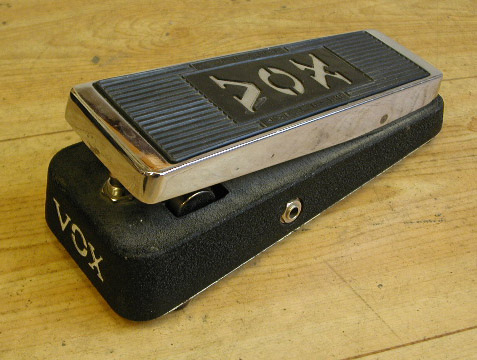 The second pre-chorus and chorus follows, which is nearly identical to the first with the exception being the appearance of John's wah-wah pedal guitar part in the chorus. His riffs are heard in the open spaces the appear after his “nothing's gonna change my world” lines. The second pre-chorus and chorus follows, which is nearly identical to the first with the exception being the appearance of John's wah-wah pedal guitar part in the chorus. His riffs are heard in the open spaces the appear after his “nothing's gonna change my world” lines.
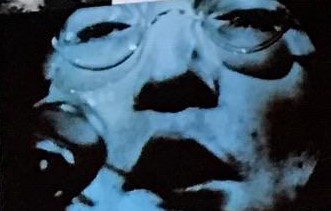 Next we hear another set of verses, another pre-chorus and then a final chorus, the instrumentation being identical to what was just heard in the previous set. The first verse heard here, which is in actuality the fifth verse of the song, is actually a structural repeat of the variant verse we witnessed in verse two with the 2/4 measure and differing chords. Next we hear another set of verses, another pre-chorus and then a final chorus, the instrumentation being identical to what was just heard in the previous set. The first verse heard here, which is in actuality the fifth verse of the song, is actually a structural repeat of the variant verse we witnessed in verse two with the 2/4 measure and differing chords.
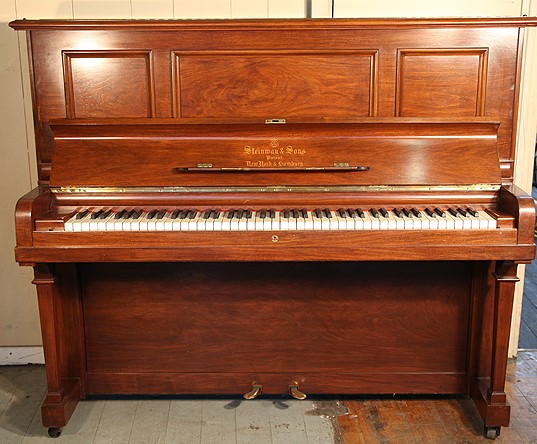 The climax to the song is the final outro, or conclusion, which is twelve measures in length and consists of John's lyric “Jai guru deva” repeated six times as the song fades out. Interesting features here are John's ascending and descending guitar notes in measures two and three, and then Paul's rising lower piano notes that repeat the pattern in measures four through twelve, this being accentuated by the orchestral overdub. The climax to the song is the final outro, or conclusion, which is twelve measures in length and consists of John's lyric “Jai guru deva” repeated six times as the song fades out. Interesting features here are John's ascending and descending guitar notes in measures two and three, and then Paul's rising lower piano notes that repeat the pattern in measures four through twelve, this being accentuated by the orchestral overdub.
American Releases
The first US release of “Across The Universe” was on the “Let It Be” soundtrack album, which came out on May 18th, 1970. It was distributed in a gate-fold jacket in America, as opposed to the box set with photo book that was released in the UK. It spent four weeks in the top spot of the Billboard album chart and has sold well over four million copies in America alone.
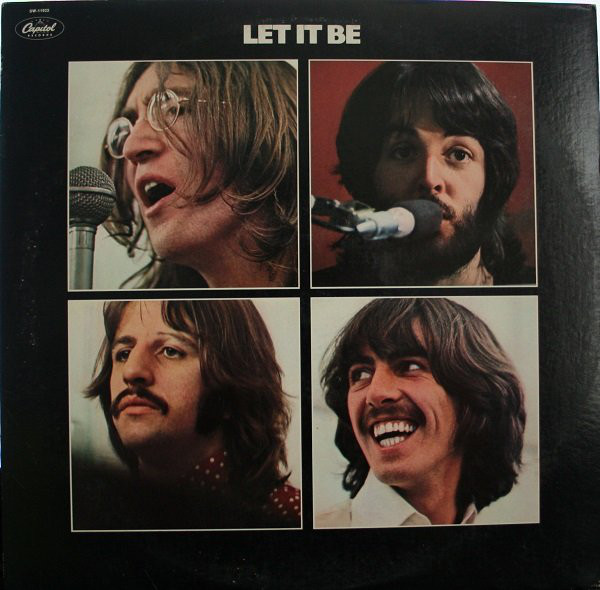 Despite having a red Apple Records label, "Let It Be" was distributed by United Artists Records upon initial release, although it eventually was dropped by the label's roster a few years later. While Capitol kept all other US Beatles albums in print throughout the '70s, “Let It Be” was the only LP from the group that wasn't legitimately available for a number of years. This was rectified in 1978, however, when Capitol Records purchased the UA catalog and re-released the “Let It Be” album once again, this time in a standard single sleeve cover. The album first appeared on compact disc on October 10th, 1987, and then as a remastered CD on September 9th, 2009. A newly mixed vinyl and CD edition of the album was then released on October 15th, 2021, as well as a special edition picture disc. Despite having a red Apple Records label, "Let It Be" was distributed by United Artists Records upon initial release, although it eventually was dropped by the label's roster a few years later. While Capitol kept all other US Beatles albums in print throughout the '70s, “Let It Be” was the only LP from the group that wasn't legitimately available for a number of years. This was rectified in 1978, however, when Capitol Records purchased the UA catalog and re-released the “Let It Be” album once again, this time in a standard single sleeve cover. The album first appeared on compact disc on October 10th, 1987, and then as a remastered CD on September 9th, 2009. A newly mixed vinyl and CD edition of the album was then released on October 15th, 2021, as well as a special edition picture disc.
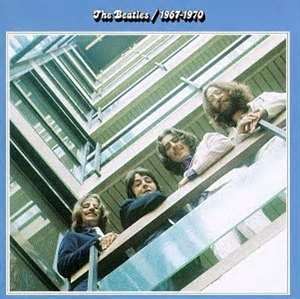 “Across The Universe” was then included on the April 19th, 1973 released compilation album “The Beatles / 1967 – 1970” (aka “The Blue Album”). This double-album peaked at #1 on the Billboard album chart and first appeared on compact disc on September 20th, 1993, a remastered version being released on August 10th, 2010. “Across The Universe” was then included on the April 19th, 1973 released compilation album “The Beatles / 1967 – 1970” (aka “The Blue Album”). This double-album peaked at #1 on the Billboard album chart and first appeared on compact disc on September 20th, 1993, a remastered version being released on August 10th, 2010.
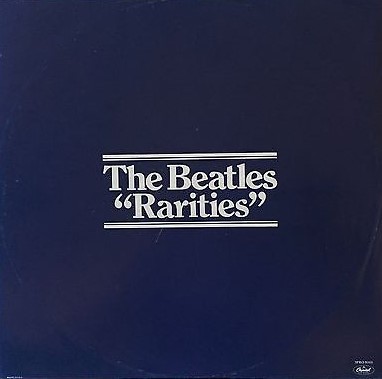 Because of EMI's decision to release a box set that included all of the British Beatles albums as well as an additional album entitled "Rarities" that included songs that did not appear on any British Beatles album, Capitol had initially decided to release this album in the US. 2,000 promotional copies of this album were manufactured (#SPRO-8969) and then another unlimited number of advance copies (ESN-SN-12009) were printed in the fall of 1979. The "World Wildlife" version of "Across The Universe" was included on this proposed album which was decided to be abondoned due to the fact that most of the songs contained therein were available on other Beatles albums in the US at the time. These promotional albums are very collectible today. Because of EMI's decision to release a box set that included all of the British Beatles albums as well as an additional album entitled "Rarities" that included songs that did not appear on any British Beatles album, Capitol had initially decided to release this album in the US. 2,000 promotional copies of this album were manufactured (#SPRO-8969) and then another unlimited number of advance copies (ESN-SN-12009) were printed in the fall of 1979. The "World Wildlife" version of "Across The Universe" was included on this proposed album which was decided to be abondoned due to the fact that most of the songs contained therein were available on other Beatles albums in the US at the time. These promotional albums are very collectible today.
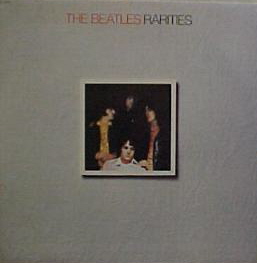 March 24th, 1980, was the date that US fans first got to hear the “World Wildlife” version of “Across The Universe,” complete with bird sound effects and female backing singers, on a new Capitol compilation album entitled “Rarities.” Although the British “Rarities” album mentioned above was becoming increasingly available in the US, which included this track, Capitol decided to release an equivalent album featuring rare Beatles songs not available in the US. March 24th, 1980, was the date that US fans first got to hear the “World Wildlife” version of “Across The Universe,” complete with bird sound effects and female backing singers, on a new Capitol compilation album entitled “Rarities.” Although the British “Rarities” album mentioned above was becoming increasingly available in the US, which included this track, Capitol decided to release an equivalent album featuring rare Beatles songs not available in the US.
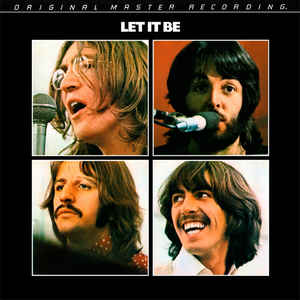 In November of 1986, the “Let It Be” soundtrack album was also made available as an “Original Master Recording” release by Mobile Fidelity Sound Lab. Their practice was to prepare a new master utilizing half-speed mastering technology from the original master tapes, in this case using what was referred to therein as a “corrected copy tape.” The album was issued in both a single sleeve and gatefold cover, the single sleeve cover being the rarest. In November of 1986, the “Let It Be” soundtrack album was also made available as an “Original Master Recording” release by Mobile Fidelity Sound Lab. Their practice was to prepare a new master utilizing half-speed mastering technology from the original master tapes, in this case using what was referred to therein as a “corrected copy tape.” The album was issued in both a single sleeve and gatefold cover, the single sleeve cover being the rarest.
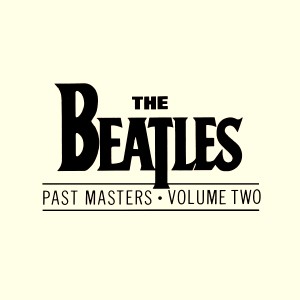 With the ushering in of the compact disc era, the Wildlife version of “Across The Universe” found its way onto a newly created album entitled “Past Masters, Volume Two.” This was released on CD on March 7th, 1988 and on a vinyl double-album that combined both volumes of "Past Masters" on October 24th, 1988. The double-album concept was continued for the remastered re-releases of this album, the 2-CD set coming out on September 9th, 2009 and the vinyl double-album coming out on November 12th, 2012. With the ushering in of the compact disc era, the Wildlife version of “Across The Universe” found its way onto a newly created album entitled “Past Masters, Volume Two.” This was released on CD on March 7th, 1988 and on a vinyl double-album that combined both volumes of "Past Masters" on October 24th, 1988. The double-album concept was continued for the remastered re-releases of this album, the 2-CD set coming out on September 9th, 2009 and the vinyl double-album coming out on November 12th, 2012.
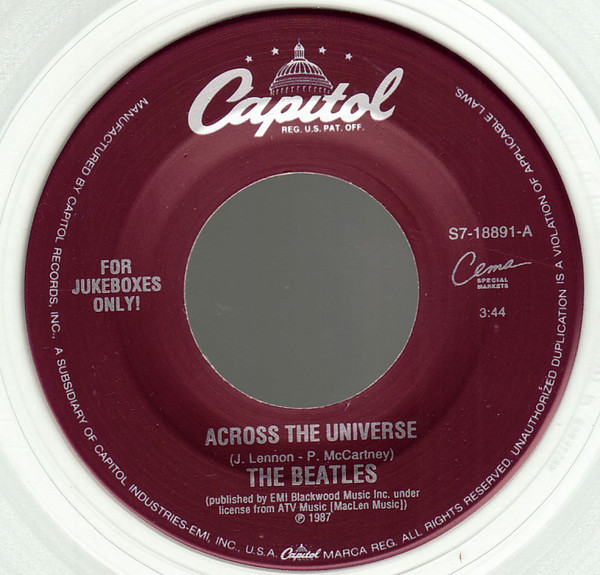 On January 24th, 1996, the “Let It Be” version of “Across The Universe” was released as a single in the Capitol Cema Series on clear vinyl among their “For Jukeboxes Only!” series. The song was designated as the a-side paired with “Two Of Us,” this release becoming quite rare as time goes on. On January 24th, 1996, the “Let It Be” version of “Across The Universe” was released as a single in the Capitol Cema Series on clear vinyl among their “For Jukeboxes Only!” series. The song was designated as the a-side paired with “Two Of Us,” this release becoming quite rare as time goes on.
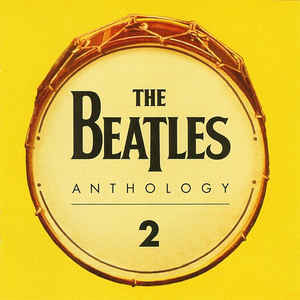 The original "take two" of “Across The Universe,” as recorded on February 7, 1968, was released on the compilation album “Anthology 2” on March 19th, 1996. This version, as described above, shows the first incarnation of the song with both John and Paul on acoustic guitars, George on sitar, and Ringo on svaramandal, adorned gorgeously with Lennon's lead vocals. The “Anthology 2” CD Sampler also included this version of the song to encourage its radio airplay at the time. The original "take two" of “Across The Universe,” as recorded on February 7, 1968, was released on the compilation album “Anthology 2” on March 19th, 1996. This version, as described above, shows the first incarnation of the song with both John and Paul on acoustic guitars, George on sitar, and Ringo on svaramandal, adorned gorgeously with Lennon's lead vocals. The “Anthology 2” CD Sampler also included this version of the song to encourage its radio airplay at the time.
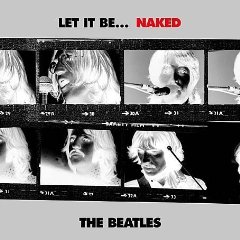 November 17th, 2003, was the release date for “Let It Be...Naked,” a project that was proposed by Paul McCartney to strip away all overdubs, the most noteworthy being Phil Spector's orchestration, to present the material as they originally intended. As described above, John's lead vocal and guitar, Ringo's drum taps and George's tamboura are the only elements heard here, layers of echo being added as the song progresses. November 17th, 2003, was the release date for “Let It Be...Naked,” a project that was proposed by Paul McCartney to strip away all overdubs, the most noteworthy being Phil Spector's orchestration, to present the material as they originally intended. As described above, John's lead vocal and guitar, Ringo's drum taps and George's tamboura are the only elements heard here, layers of echo being added as the song progresses.
November 20th, 2006, was the release date for the compilation album “Love,” the opening track “Because” featuring the bird sound effects from the Wildlife version of “Across The Universe."
 On September 9th, 2009, the CD box set "The Beatles In Mono" was released, featuring the January 1969 mono mix of "Across The Universe" as reviewed by The Beatles at Twickenham Film Studios on January 7th, 1969. As detailed above, this mix already included the birds sound effects and was intended for the "Yellow Submarine" soundtrack EP, which never came to fruition. The vinyl edition of this box set was first released on September 9th, 2014. On September 9th, 2009, the CD box set "The Beatles In Mono" was released, featuring the January 1969 mono mix of "Across The Universe" as reviewed by The Beatles at Twickenham Film Studios on January 7th, 1969. As detailed above, this mix already included the birds sound effects and was intended for the "Yellow Submarine" soundtrack EP, which never came to fruition. The vinyl edition of this box set was first released on September 9th, 2014.
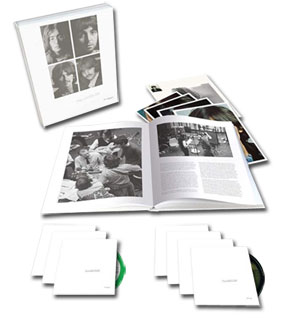 The “Super Deluxe” 6CD + Blu-ray “50th Anniversary” edition of the “White Album," surprisingly, featured a unique version of “Across The Universe,” regardless of the song not being included on the original album. This box set, which was released on November 9th, 2018, includes the never-before-heard "take six" featuring the stark instrumentation of only John on acoustic guitar and vocals and Ringo on tom toms, John's “Are you alright, Richie?” introduction included. The “Super Deluxe” 6CD + Blu-ray “50th Anniversary” edition of the “White Album," surprisingly, featured a unique version of “Across The Universe,” regardless of the song not being included on the original album. This box set, which was released on November 9th, 2018, includes the never-before-heard "take six" featuring the stark instrumentation of only John on acoustic guitar and vocals and Ringo on tom toms, John's “Are you alright, Richie?” introduction included.
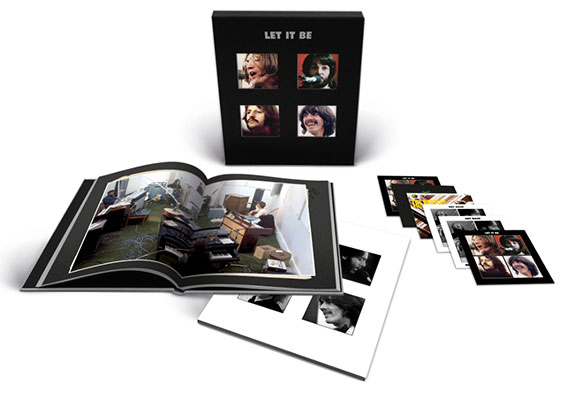 On October 15th, 2021, various editions of the "Let It Be" album were released that feature interesting versions of "Across The Universe." The "Deluxe" 2CD set, the "Super Deluxe" 5CD + Blu-ray edition and the "Super Deluxe" 4LP + 1 12" EP edition, all feature the newly remixed Giles Martin version of the song as well as the unreleased Glyn Johns mix prepared for his proposed 1970 "Get Back" album. On October 15th, 2021, various editions of the "Let It Be" album were released that feature interesting versions of "Across The Universe." The "Deluxe" 2CD set, the "Super Deluxe" 5CD + Blu-ray edition and the "Super Deluxe" 4LP + 1 12" EP edition, all feature the newly remixed Giles Martin version of the song as well as the unreleased Glyn Johns mix prepared for his proposed 1970 "Get Back" album.
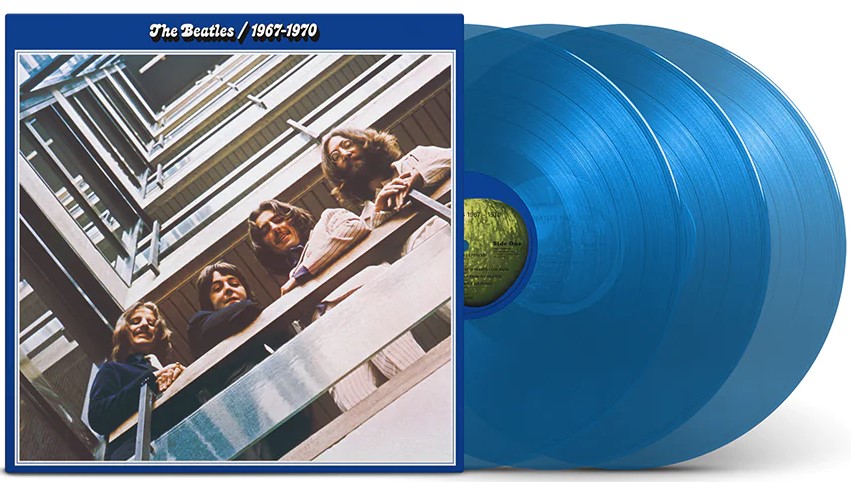 A 50th Anniversay edition of the compilation album "The Beatles / 1967 - 1970" (aka "The Blue Album") was released on November 10th, 2023, the Giles Martin stereo mix of "Across The Universe" as detailed above, being included. This expanded release included 12 additional songs for a total of 38 tracks, and was made available as a double CD and as a triple vinyl release on both black and blue vinyl. A 50th Anniversay edition of the compilation album "The Beatles / 1967 - 1970" (aka "The Blue Album") was released on November 10th, 2023, the Giles Martin stereo mix of "Across The Universe" as detailed above, being included. This expanded release included 12 additional songs for a total of 38 tracks, and was made available as a double CD and as a triple vinyl release on both black and blue vinyl.
Live Performances
Although recorded before their final rooftop performance on January 30th, 1969, it wasn't performed there, nor was it ever performed by any individual member of The Beatles afterward.
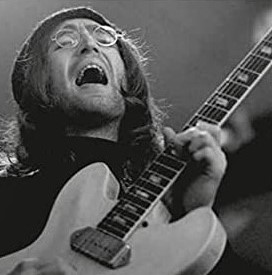 The only live footage available is the one minute and forty-one second segment in the "Let It Be" movie, detailed above, that features The Beatles' lackluster rehearsal of "Across The Universe" from January 7th, 1969. It was because of this uninspiring footage, edited together from two seperate rehearsal takes, that a decision was made to include the song in the soundtrack album, hence having the original February 1968 recording receive the lush Phil Spector arrangement and orchestration. The only live footage available is the one minute and forty-one second segment in the "Let It Be" movie, detailed above, that features The Beatles' lackluster rehearsal of "Across The Universe" from January 7th, 1969. It was because of this uninspiring footage, edited together from two seperate rehearsal takes, that a decision was made to include the song in the soundtrack album, hence having the original February 1968 recording receive the lush Phil Spector arrangement and orchestration.
Conclusion
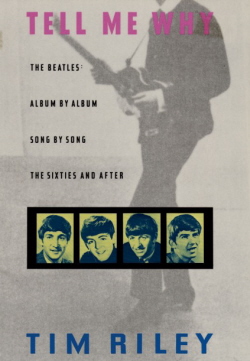 Overwhelmingly, the consensus is that Phil Spector's treatment of “Across The Universe” on the “Let It Be” album is abominable. Most critics and reviewers agree, some even being merciless in their condemnation of this track. “Unnecessarily hampered,” writes Tim Riley in his book “Tell Me Why,” adding: “Spector's souped-up strings and female choir make saccharine sentiment out of Lennon's stirring pastoral...(which) is suddenly transformed into a glitzy Hollywood production number; a choir of nymphs singing from the trees, a heavenly orchestra casting a benevolent glow upon the scene.” Musicologist Ian MacDonald, in “Revolution In The Head,” described Spector's production as “plastering it with Disney strings and lullaby voices.” Similar examples appear endless. Overwhelmingly, the consensus is that Phil Spector's treatment of “Across The Universe” on the “Let It Be” album is abominable. Most critics and reviewers agree, some even being merciless in their condemnation of this track. “Unnecessarily hampered,” writes Tim Riley in his book “Tell Me Why,” adding: “Spector's souped-up strings and female choir make saccharine sentiment out of Lennon's stirring pastoral...(which) is suddenly transformed into a glitzy Hollywood production number; a choir of nymphs singing from the trees, a heavenly orchestra casting a benevolent glow upon the scene.” Musicologist Ian MacDonald, in “Revolution In The Head,” described Spector's production as “plastering it with Disney strings and lullaby voices.” Similar examples appear endless.
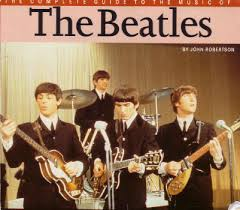 However, this elaborate production of “Across The Universe” is how the vast majority of Beatles' fans have come to know and love the song, this version earning its place among their greatest hits on the highly successful 1973 double-album compilation “The Beatles – 1967 – 1970” (aka, the “Blue Album”). John Robertson, in “The Complete Guide To The Music Of The Beatles,” disagrees with the majority of critics by saying that his production on this song was “one of the highlights of The Beatles' career, justification in itself for Spector's involvement in the creative process.” However, this elaborate production of “Across The Universe” is how the vast majority of Beatles' fans have come to know and love the song, this version earning its place among their greatest hits on the highly successful 1973 double-album compilation “The Beatles – 1967 – 1970” (aka, the “Blue Album”). John Robertson, in “The Complete Guide To The Music Of The Beatles,” disagrees with the majority of critics by saying that his production on this song was “one of the highlights of The Beatles' career, justification in itself for Spector's involvement in the creative process.”
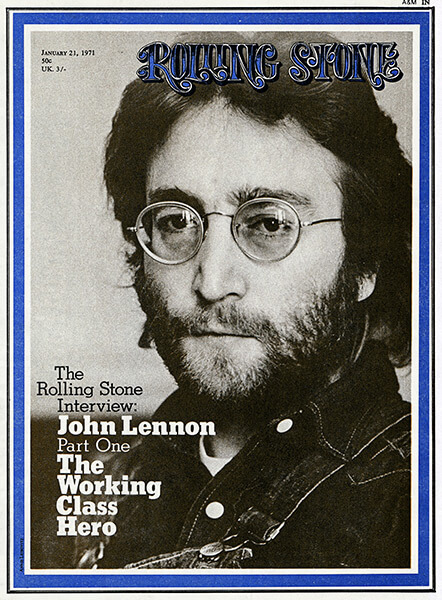 Most importantly, John Lennon himself initially approved of what Phil Spector did with the "Let It Be" album. “He worked like a pig on it,” he told Rolling Stone magazine in 1970. “He'd always wanted to work with The Beatles and he was given the sh*ttiest load of badly recorded sh*t with a lousy feeling to it ever, and he made somehing out of it. He did a great job. When I heard it, I didn't puke.” Concerning “Across The Universe” in particular, he said that the producer “worked wonders” with the song, adding: “Phil Spector took the tape, and did a damn good job with it and made a fairly reasonable sound out of it.” Most importantly, John Lennon himself initially approved of what Phil Spector did with the "Let It Be" album. “He worked like a pig on it,” he told Rolling Stone magazine in 1970. “He'd always wanted to work with The Beatles and he was given the sh*ttiest load of badly recorded sh*t with a lousy feeling to it ever, and he made somehing out of it. He did a great job. When I heard it, I didn't puke.” Concerning “Across The Universe” in particular, he said that the producer “worked wonders” with the song, adding: “Phil Spector took the tape, and did a damn good job with it and made a fairly reasonable sound out of it.”
If John Lennon felt that way, that's all that really matters.
Song Summary
“Across The Universe”
Written by: John Lennon / Paul McCartney
- Song Written: October – December, 1967
- Song Recorded: February 7 & 8, 1968, April 1, 1970
- First US Release Date: May 18, 1970
- First US Album Release: Apple #AR-34001 “Let It Be”
- British Album Release: Regal Starline #SRS 5013 "No One's Gonna Change Our World"
- US Single Release: Capitol Cema #S7-18891B
- Highest Chart Position: n/a
- Length: 3:51 (“Let It Be” version), 3:47 (“World Wildlife” version)
- Key: Db (“Let It Be” version), Eb (“World Wildlife” version)
- Producers ("Let It Be" version): George Martin, Phil Spector
- Producer ("World Wildlife" version): George Martin
- Engineers ("Let It Be" version): Martin Benge, Phil McDonald, Geoff Emerick, Ken Scott, Richard Lush, Peter Bown
- Engineers ("World Wildlife" version): Martin Benge, Phil McDonald, Geoff Emerick, Ken Scott, Richard Lush
Instrumentation for “Let It Be” version (most likely):
- John Lennon - Lead Vocals, Acoustic Guitar (1967 Martin D-28), Lead Guitar (1965 Epiphone ES-230TD Casino)
- Paul McCartney - Piano (1905 Steinway Vertegrand)
- George Harrison - Tamboura, maracas
- Ringo Starr - Drums (1968 Ludwig Hollywood Maple)
- 18 musicians - violin
- 4 musicians - viola
- 4 musicians - cello
- 1 musician - harp
- 3 musicians - trumpet
- 3 musicians - trombones
- 2 musicians - acoustic guitars
- 14 vocalists - choir
Instrumentation for “World Wildlife” version (most likely):
- John Lennon - Lead and Backing Vocals, Acoustic Guitar (1967 Martin D-28), Lead Guitar (1965 Epiphone ES-230TD)
- Paul McCartney - Piano (1905 Steinway Vertegrand), backing vocals
- George Harrison - Tamboura, maracas, backing vocals
- Ringo Starr - Drums (1968 Ludwig Hollywood Maple)
- Lizzie Bravo - Backing vocals
- Gayleen Pease - Backing vocals
- George Martin - birds and children sound effects
Written and compiled by Dave Rybaczewski
|
IF YOU WOULD LIKE TO MAKE A DONATION TO KEEP THIS WEBSITE UP AND RUNNING, PLEASE CLICK BELOW!
Sign Up Below for our MONTHLY BEATLES TRIVIA QUIZ!
|